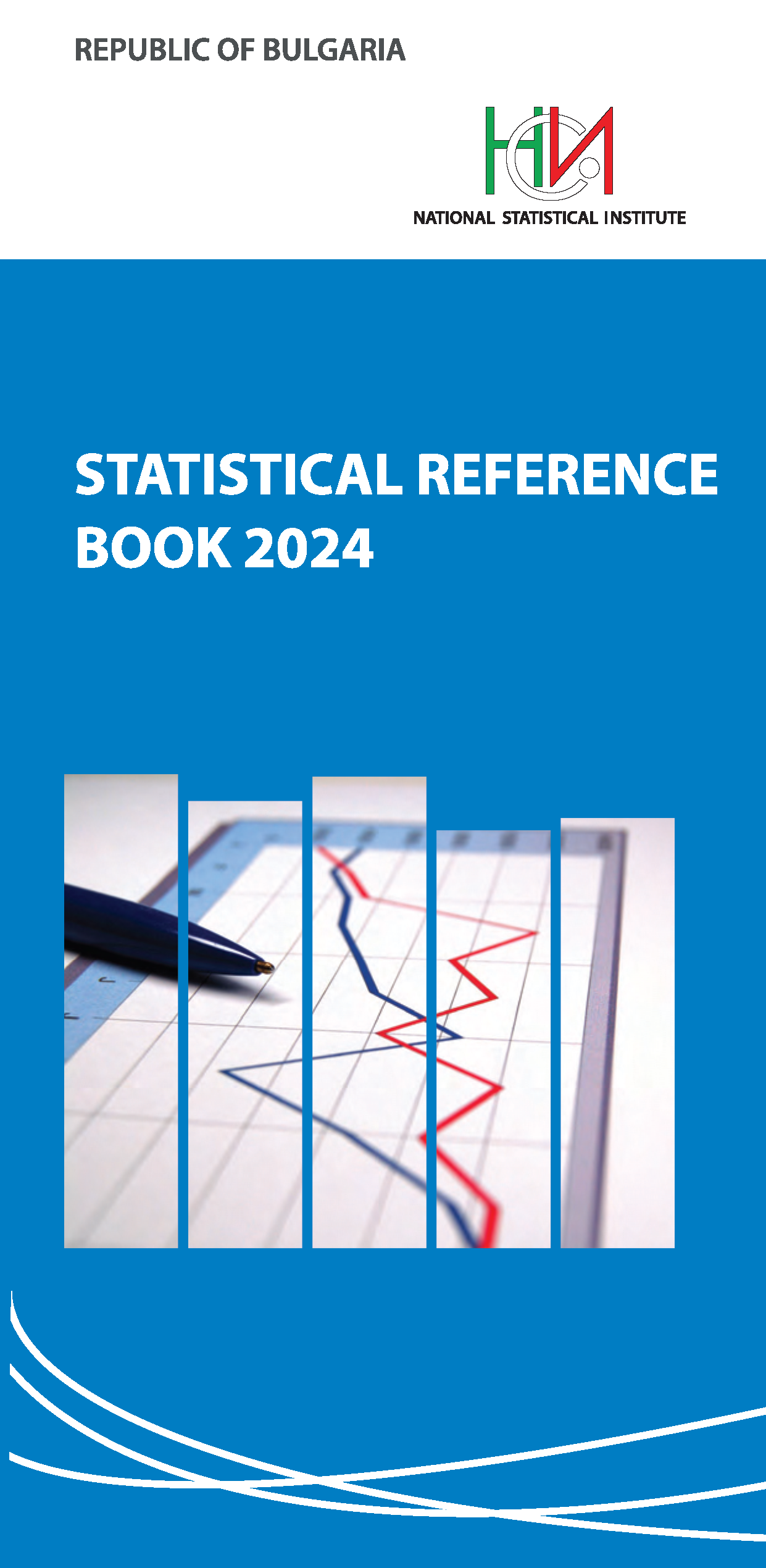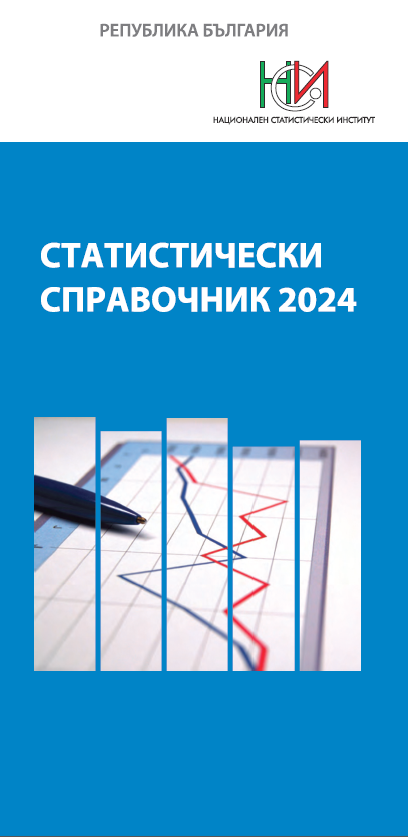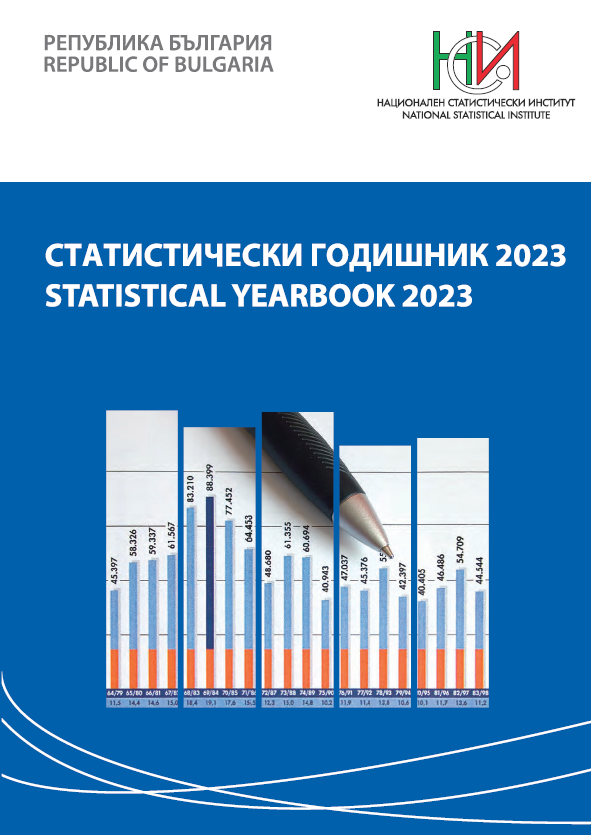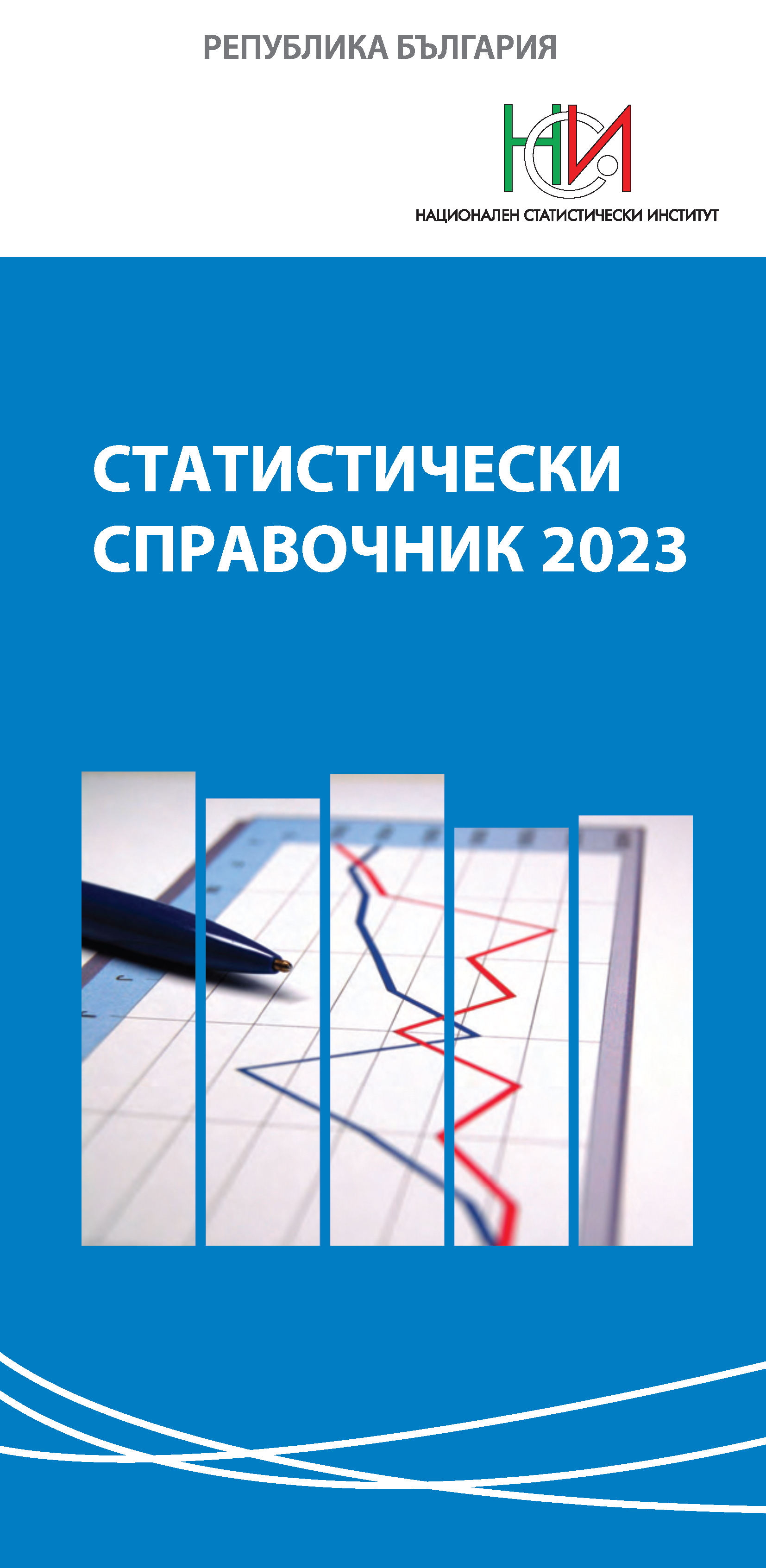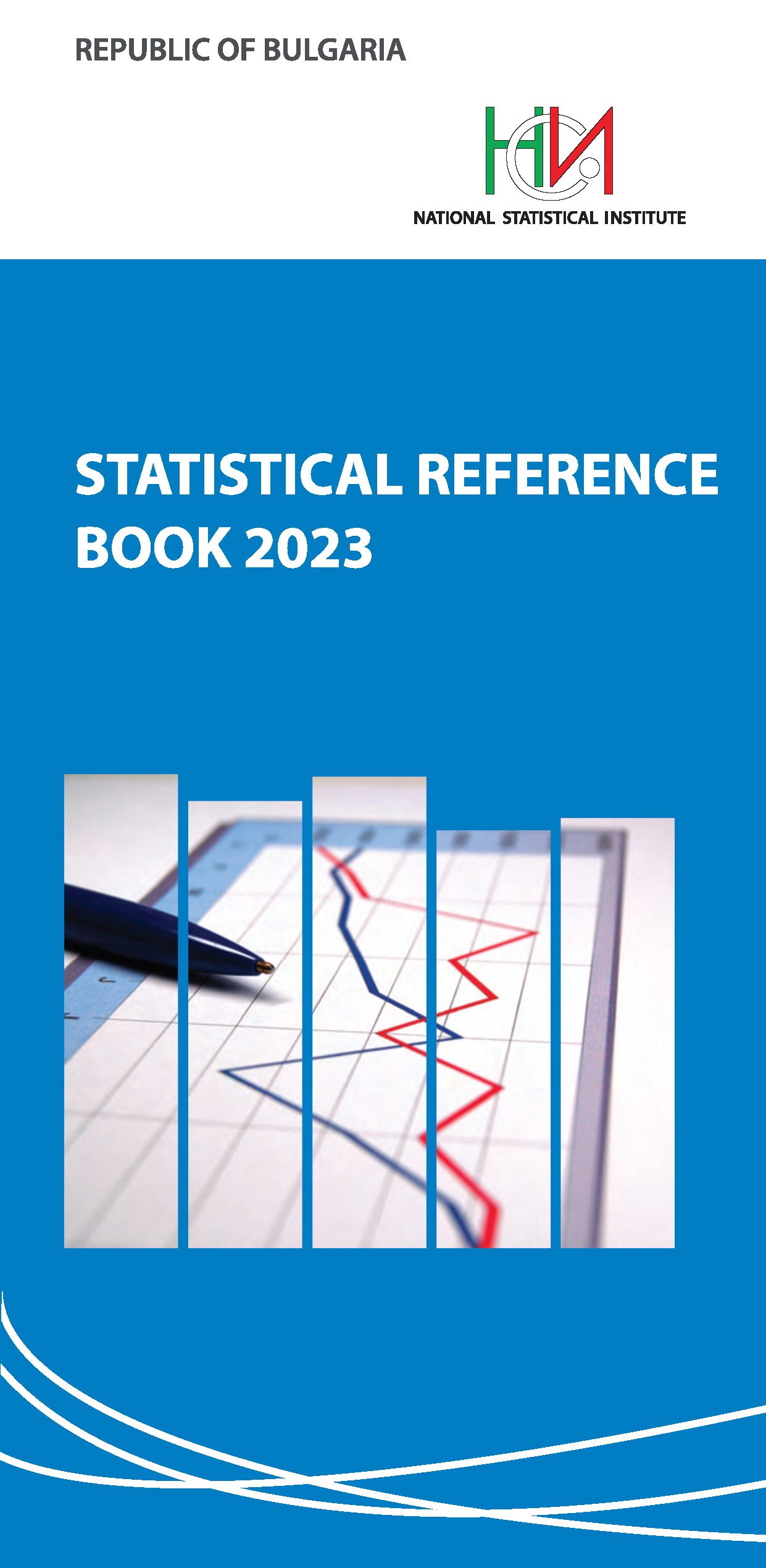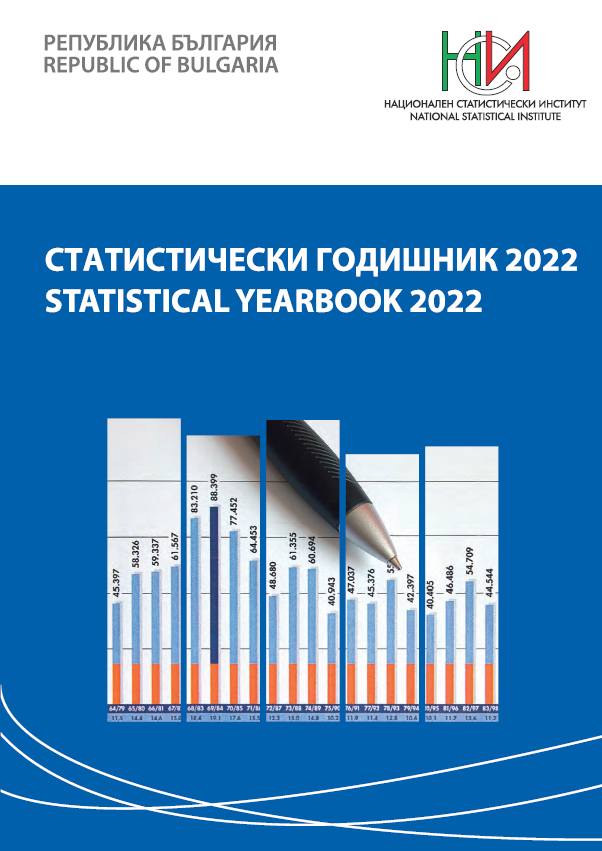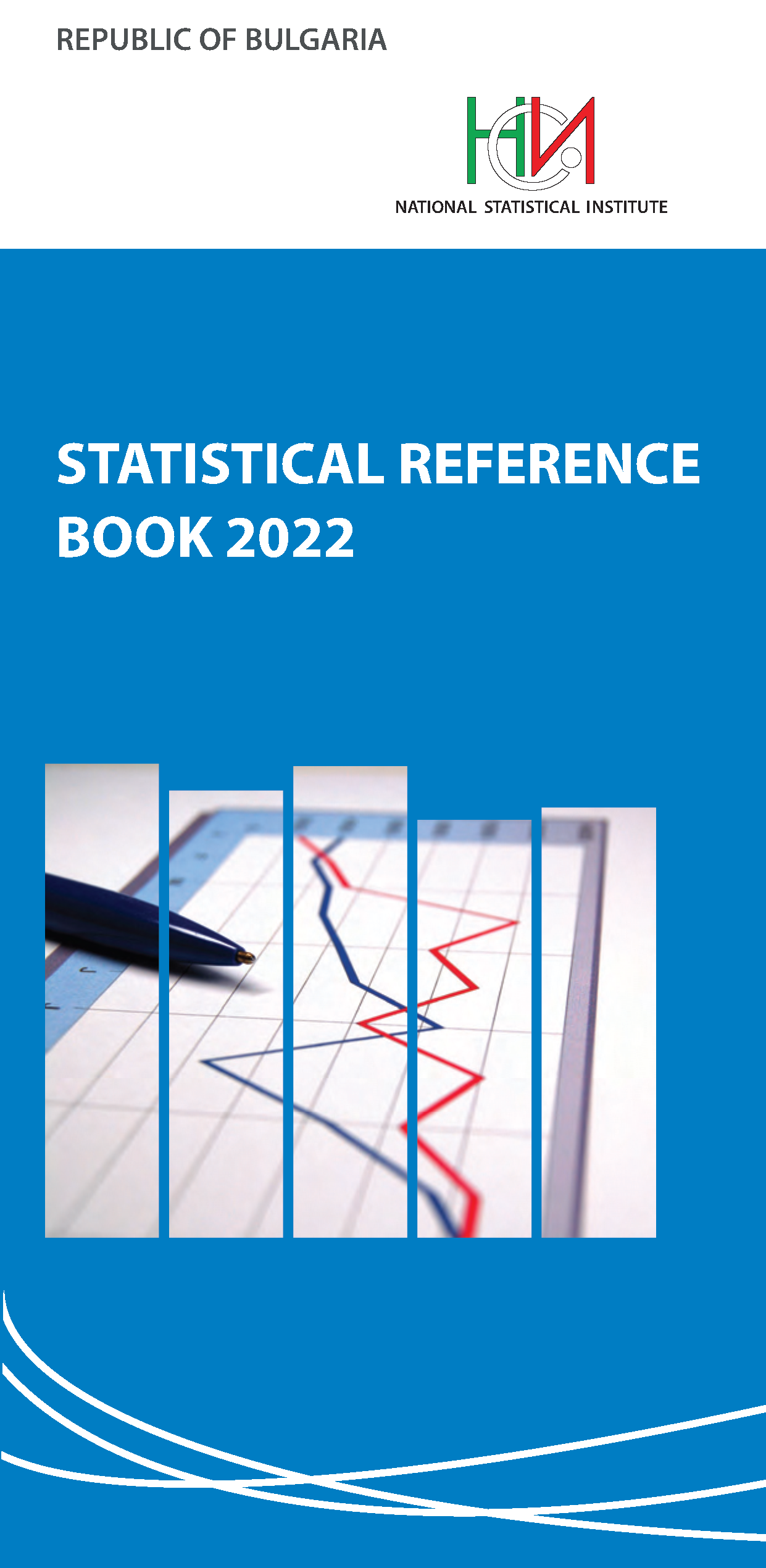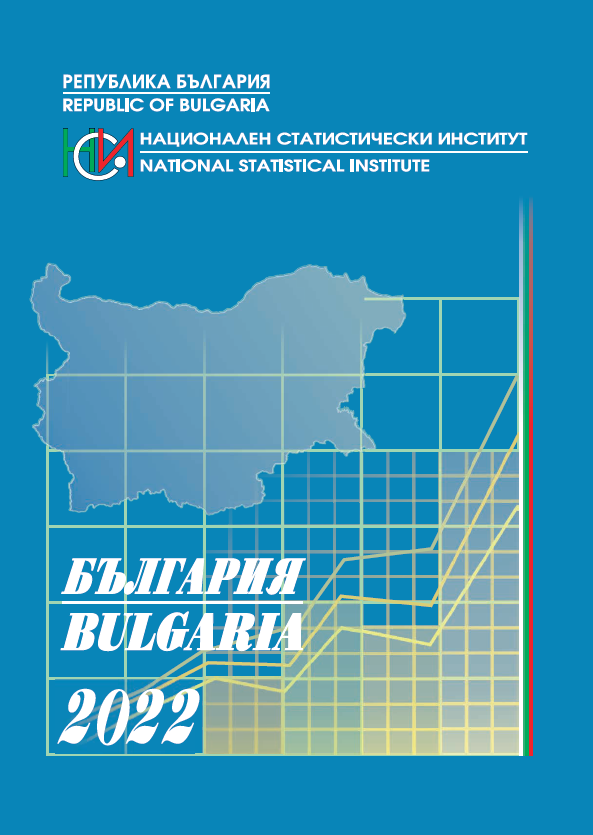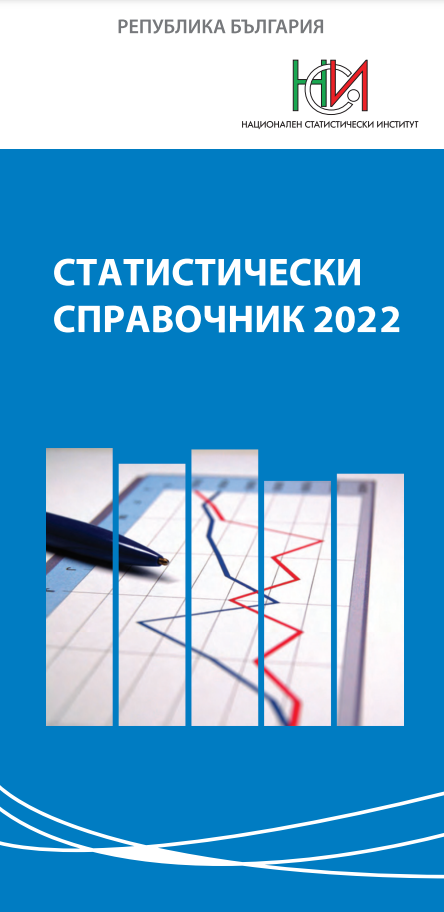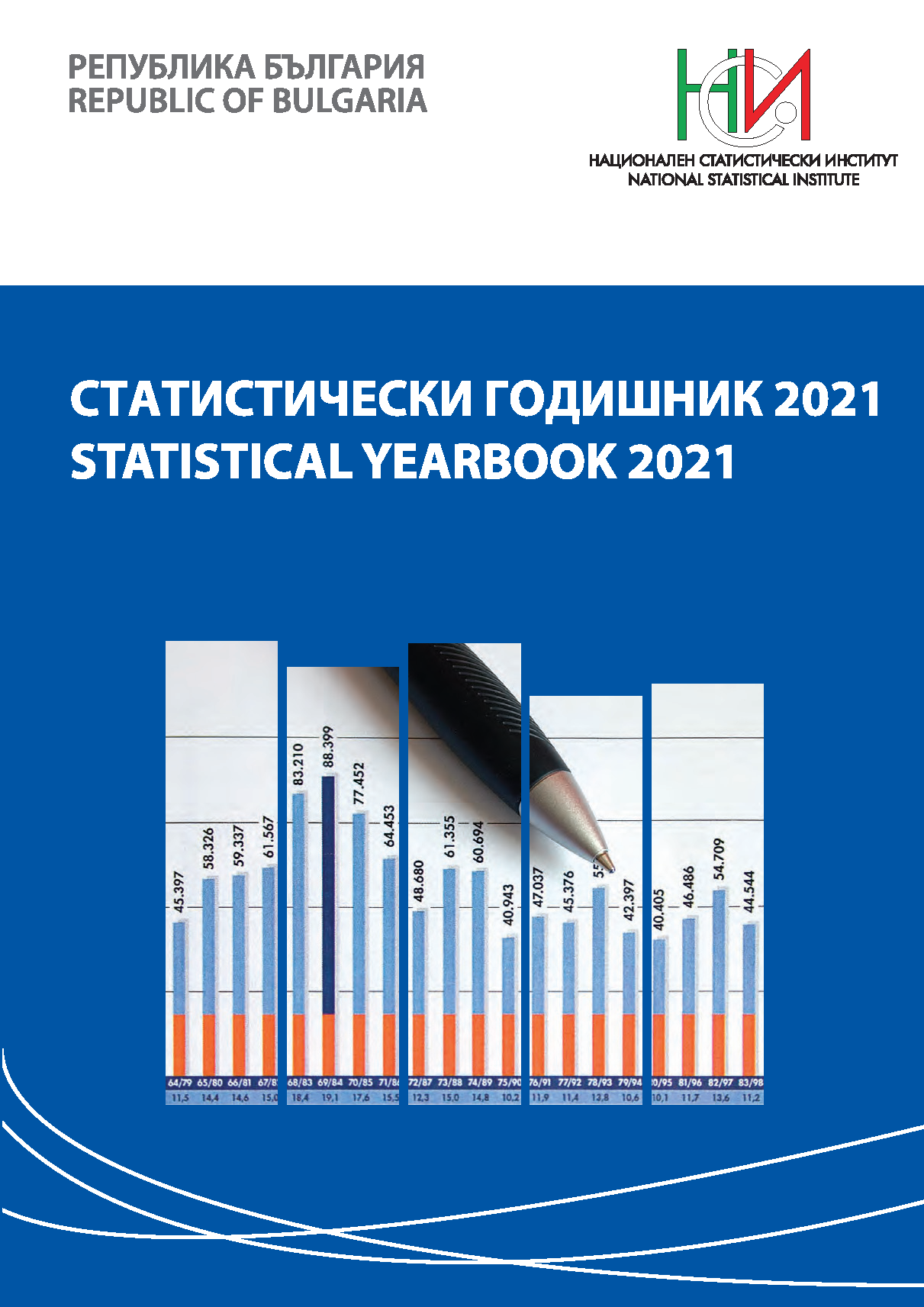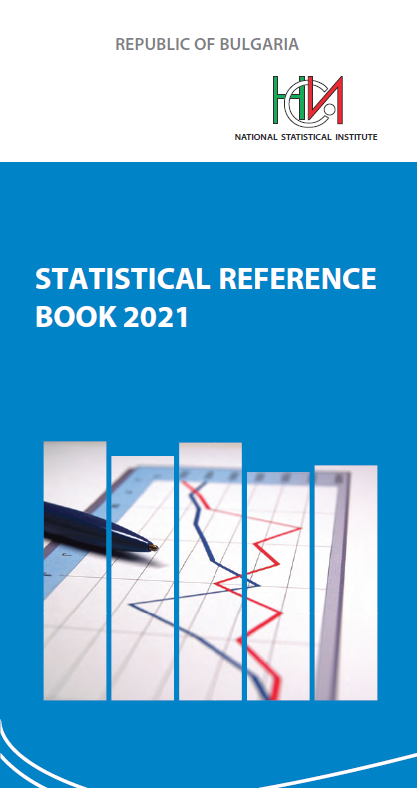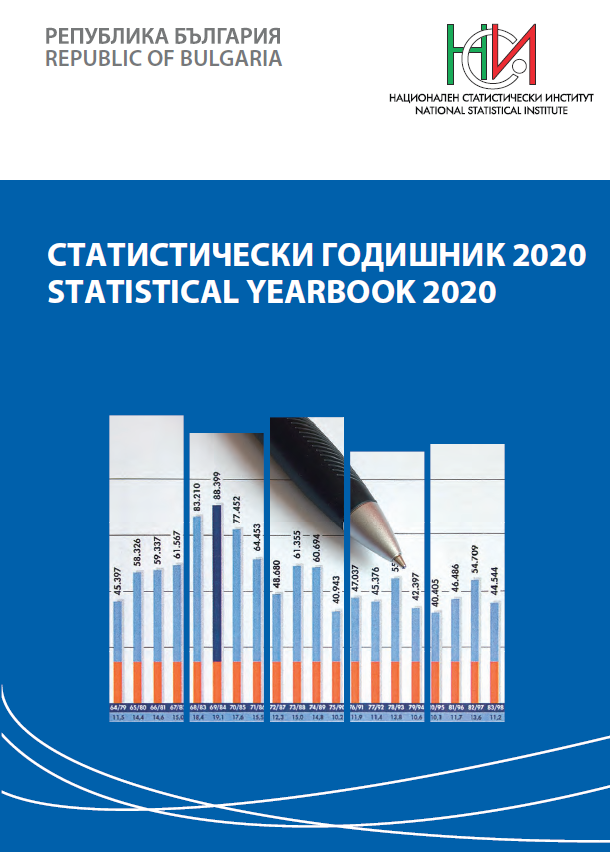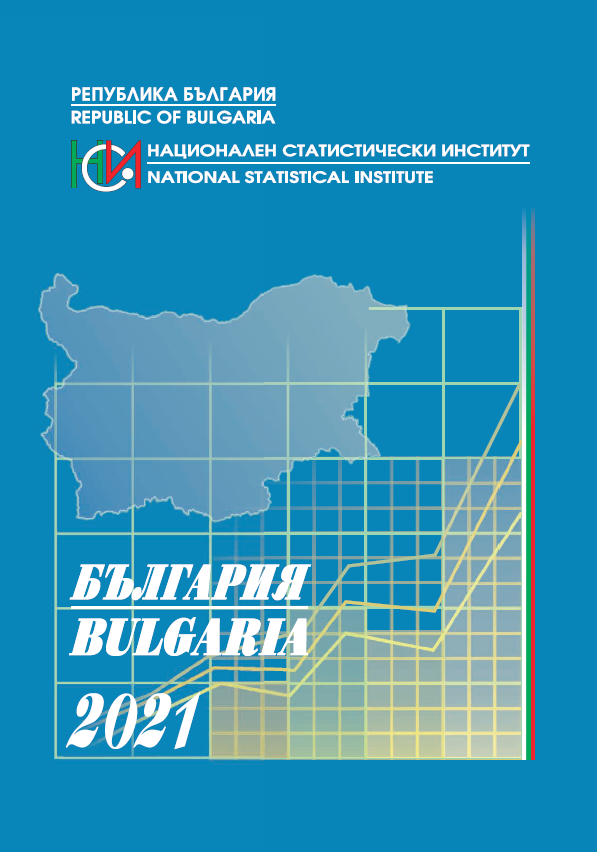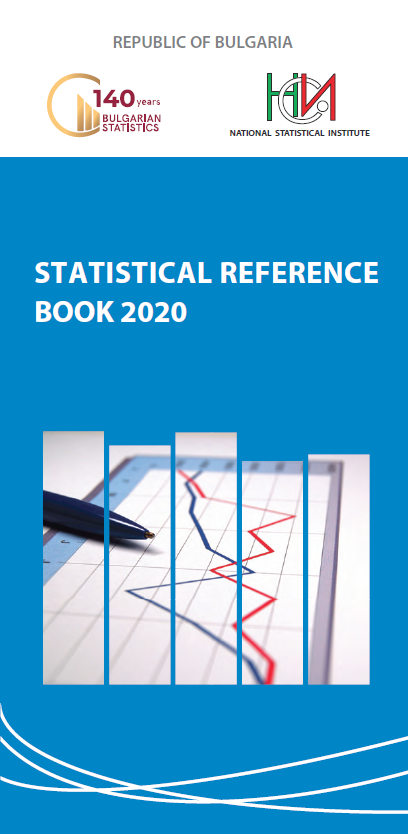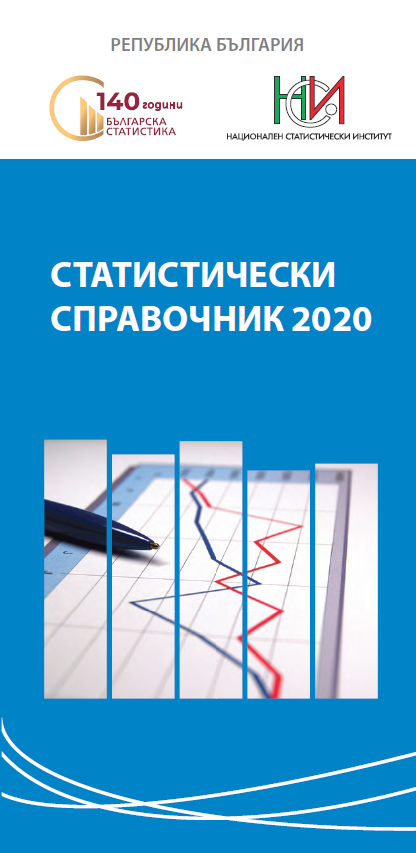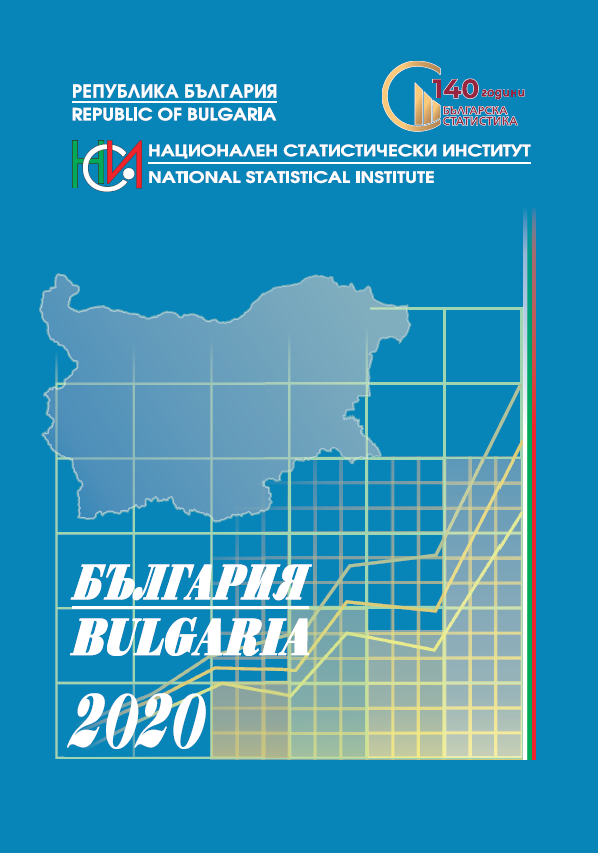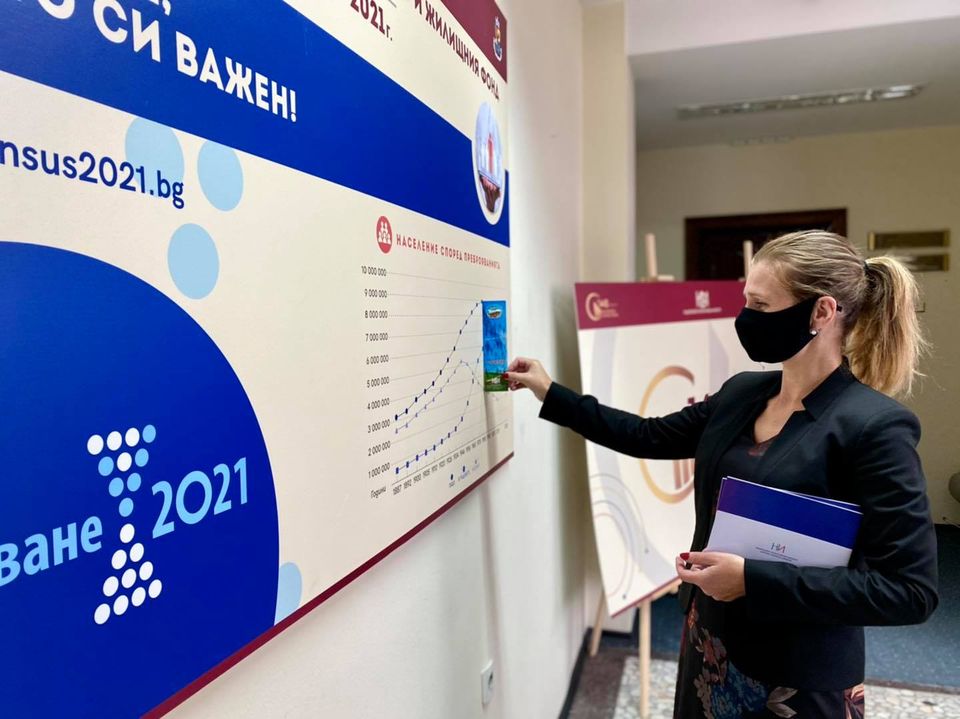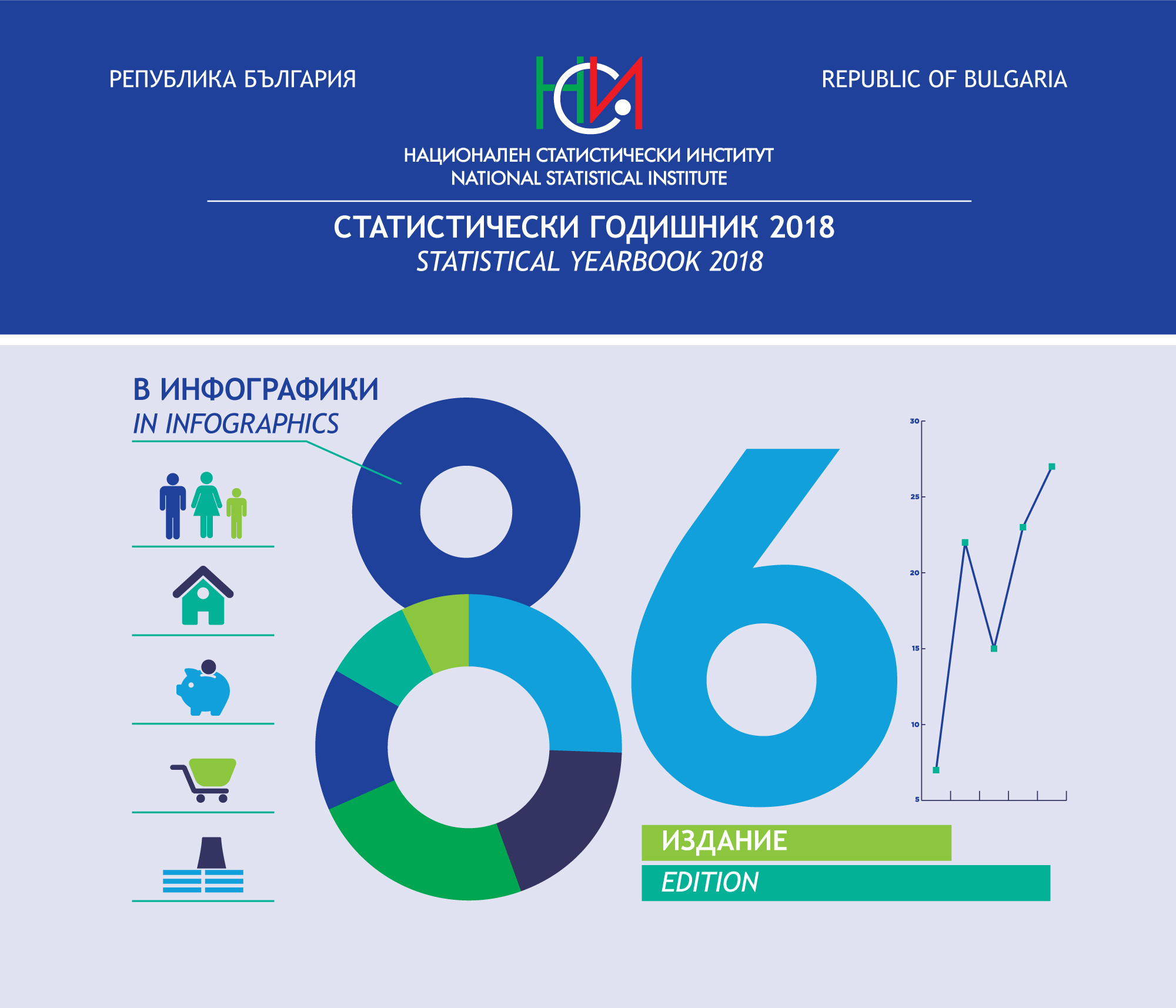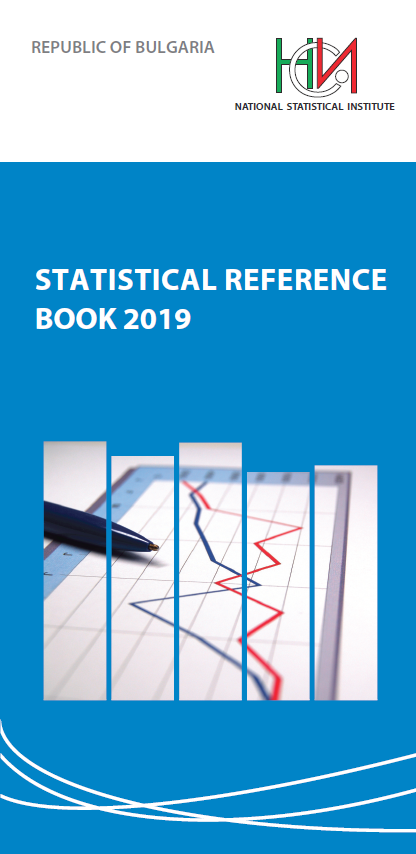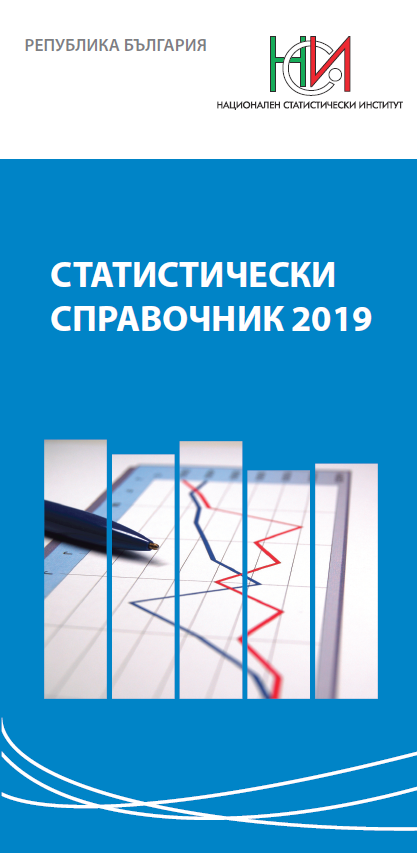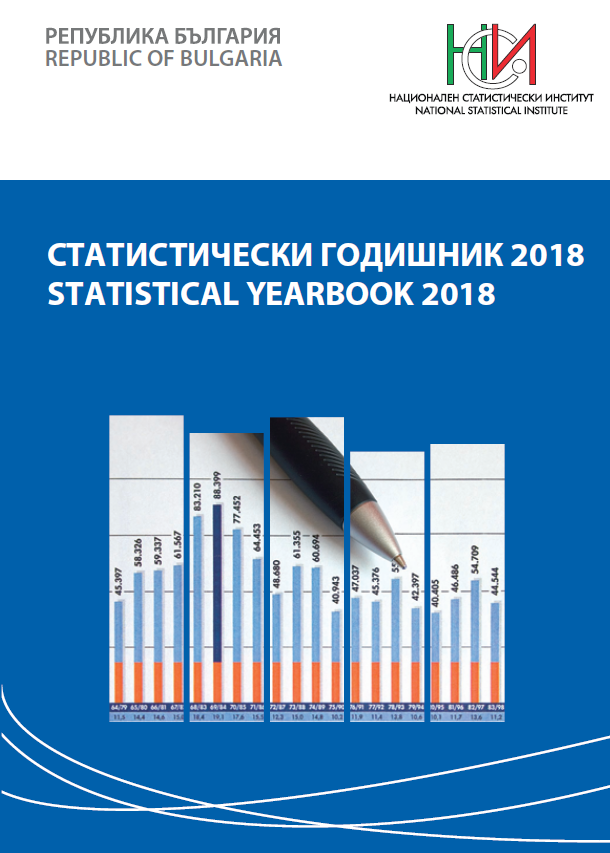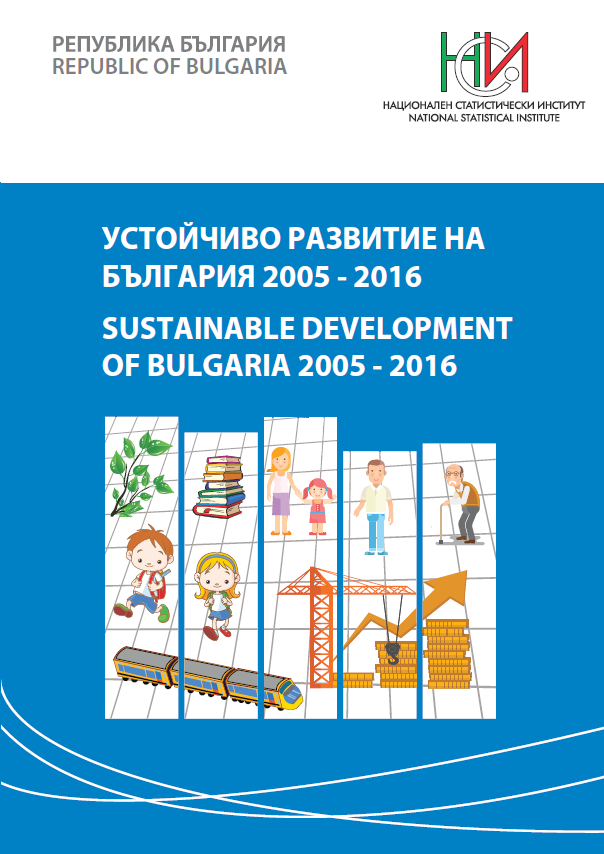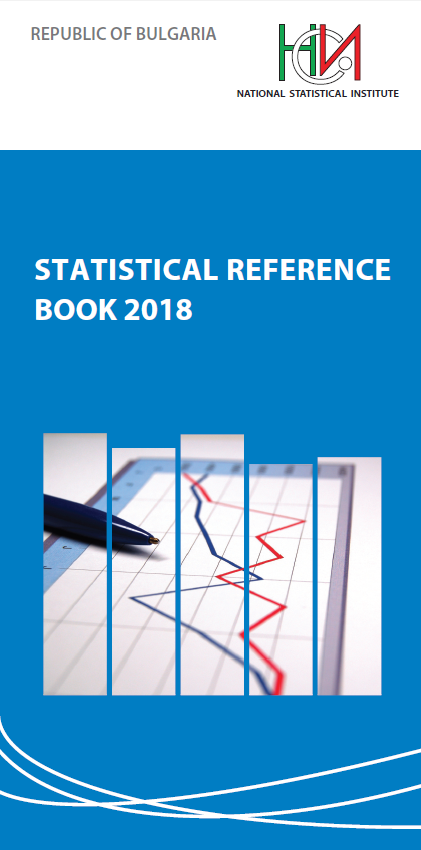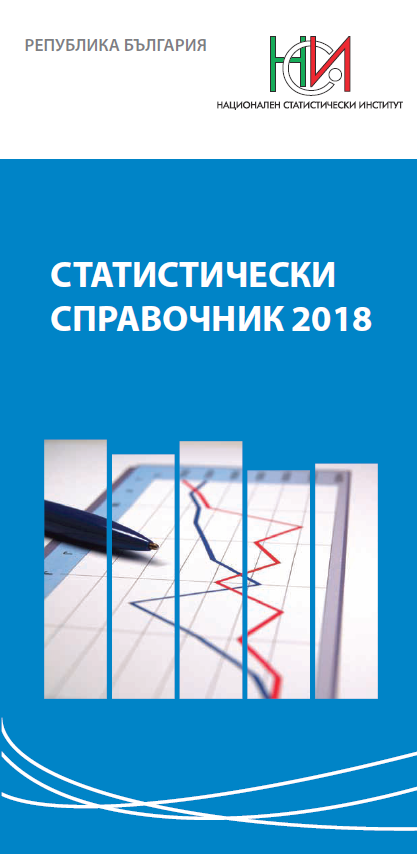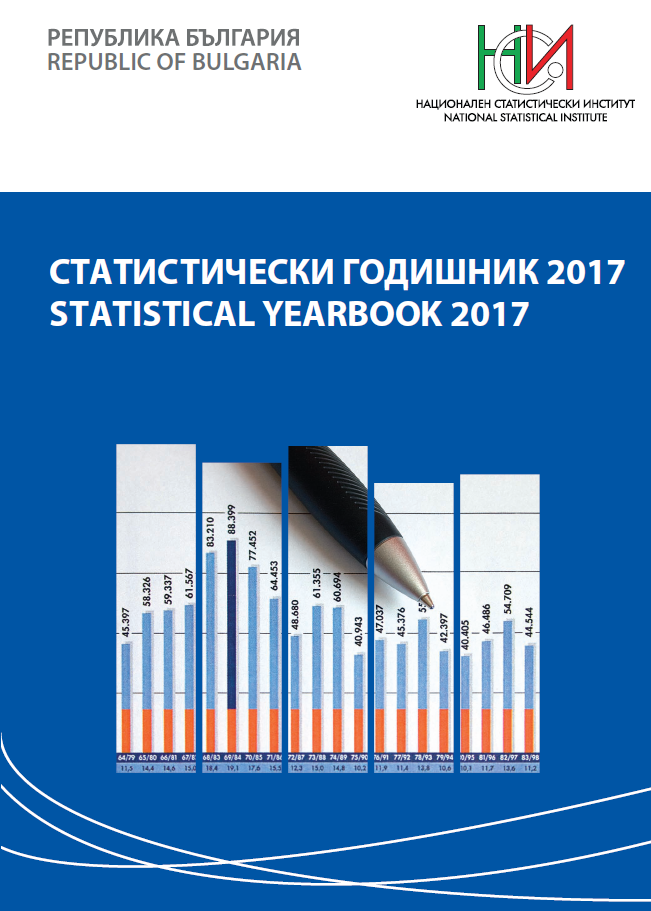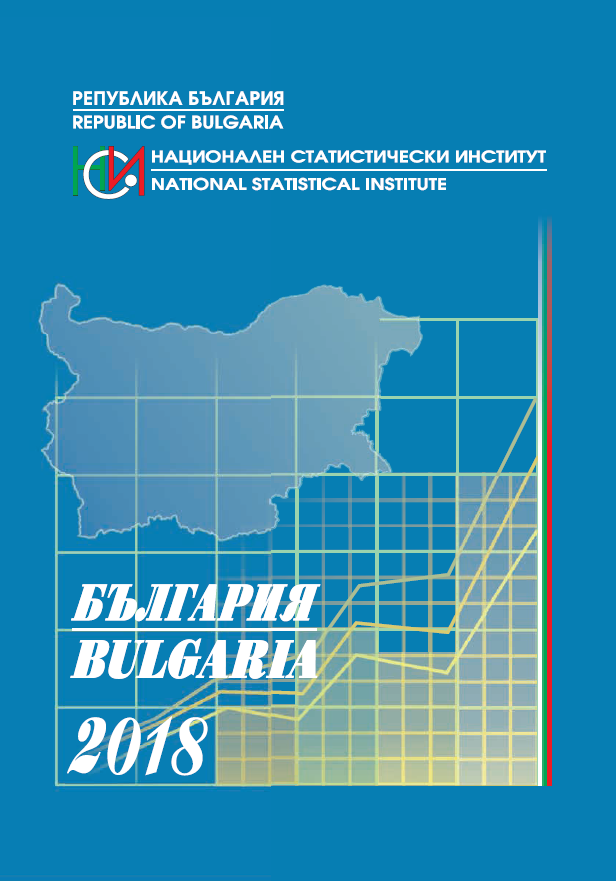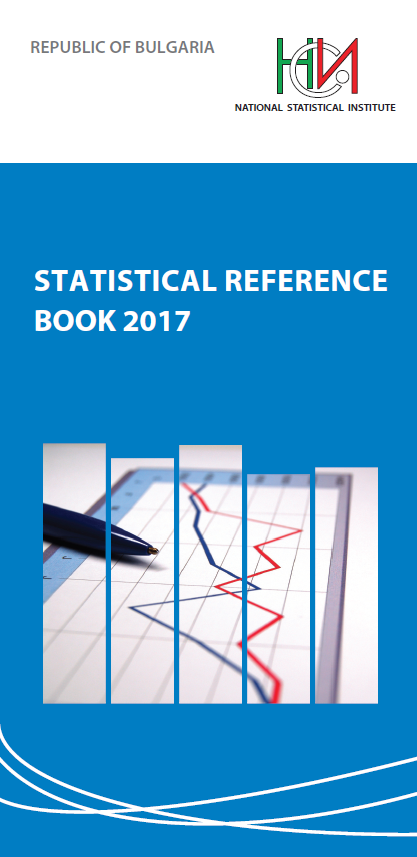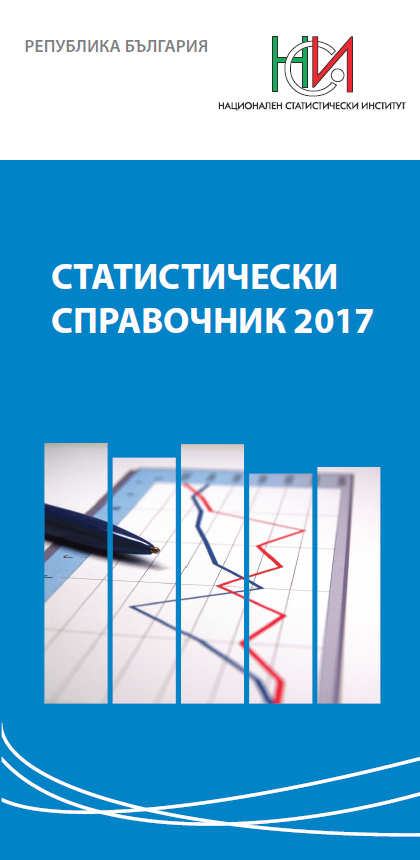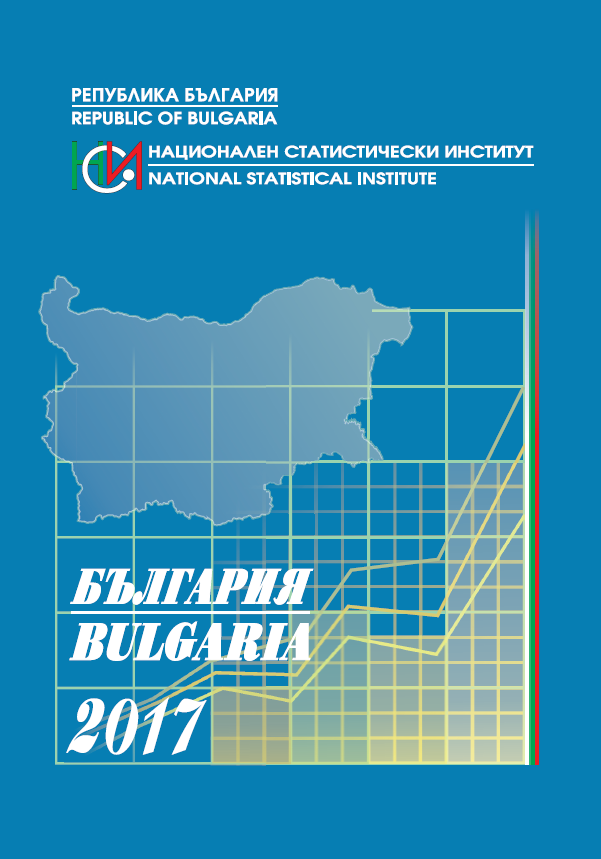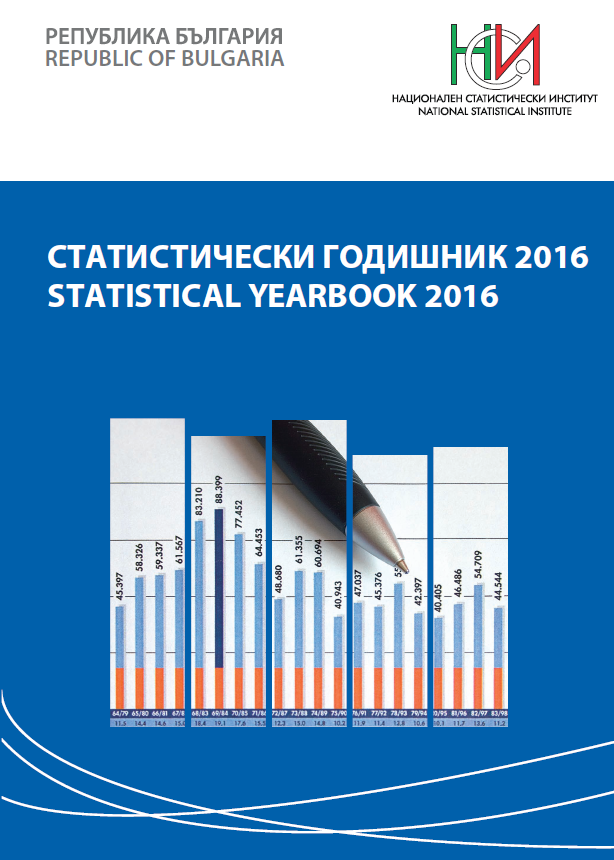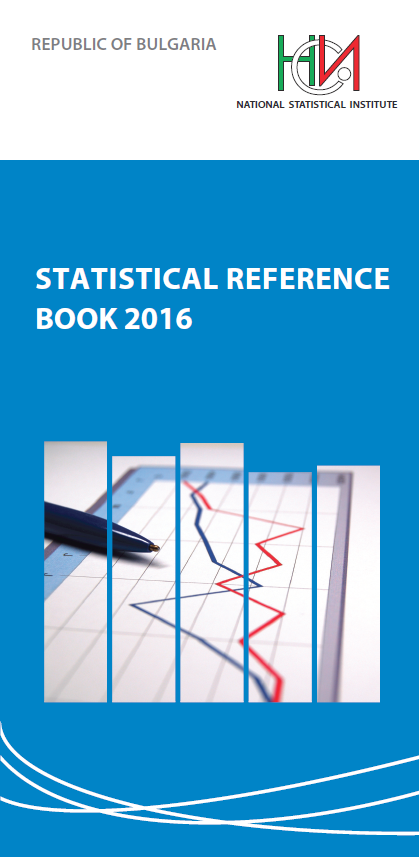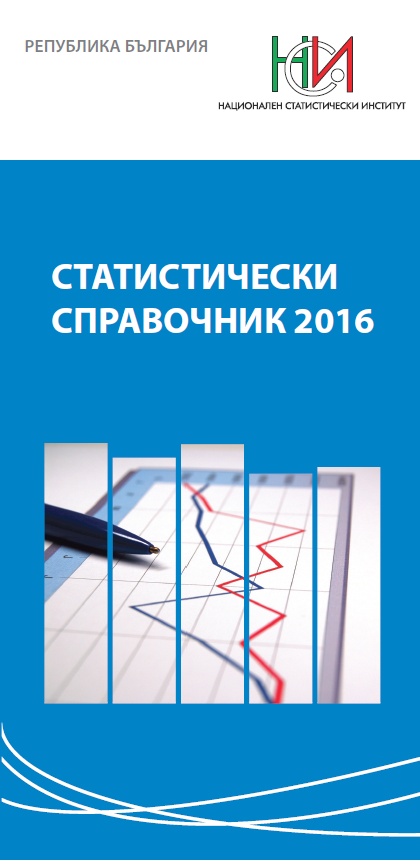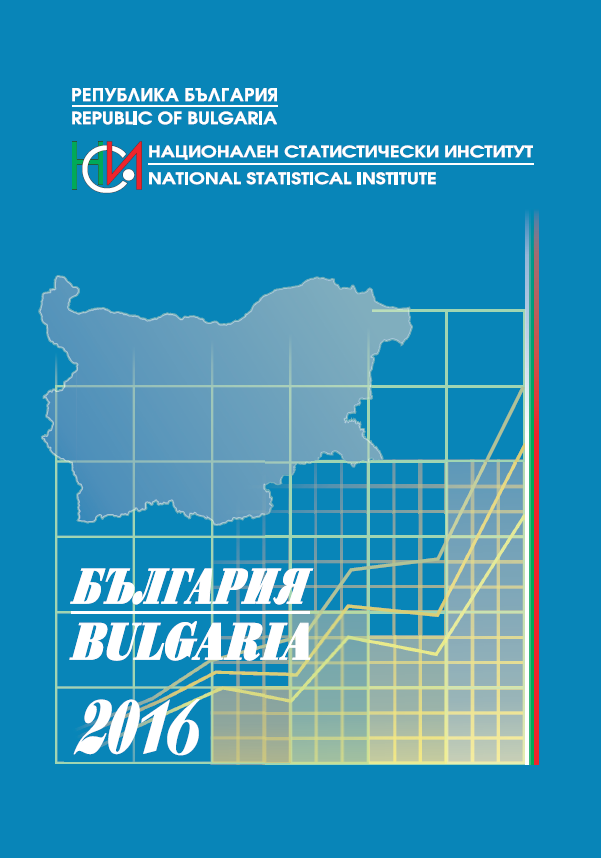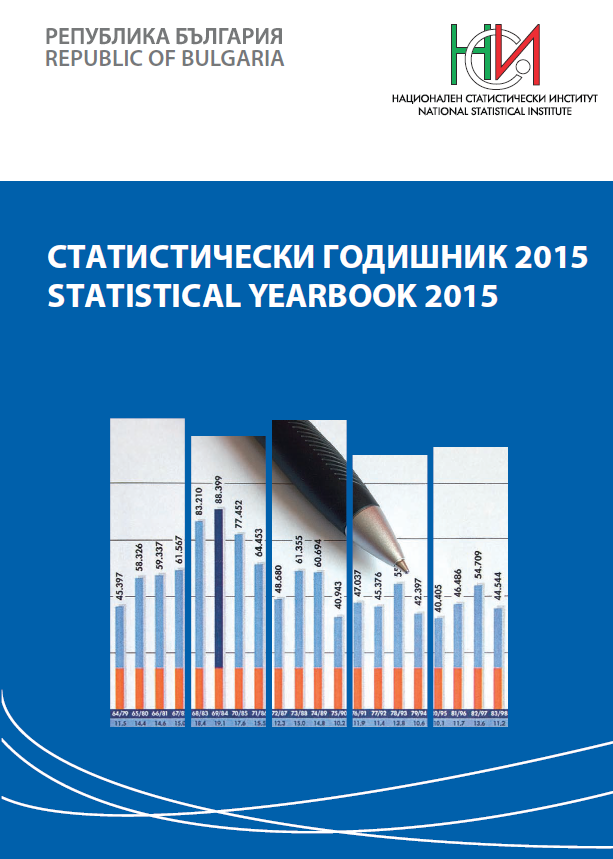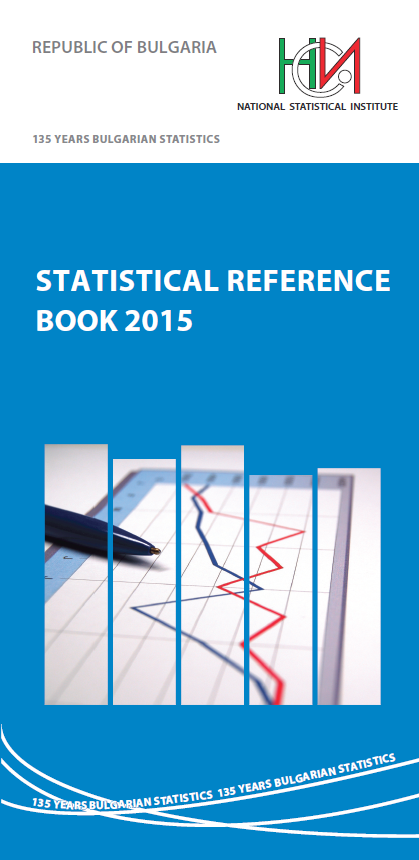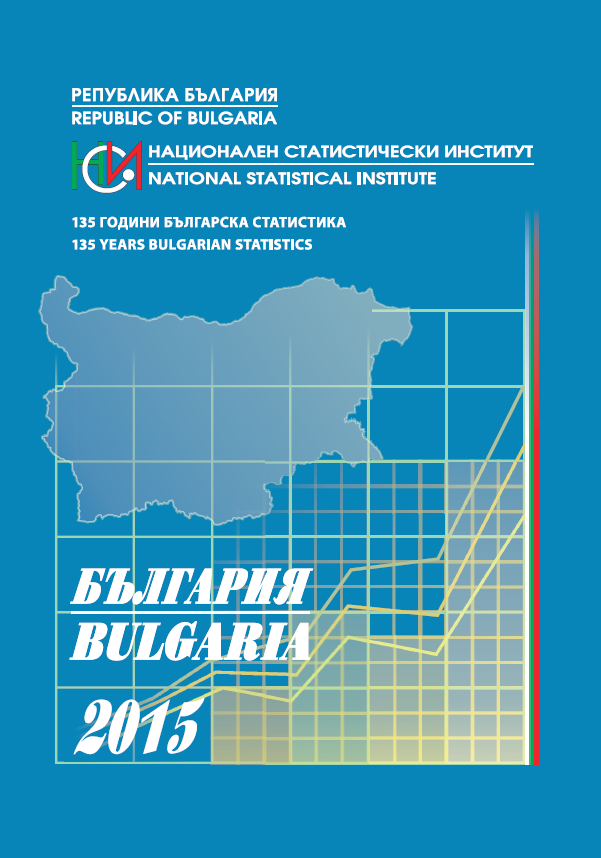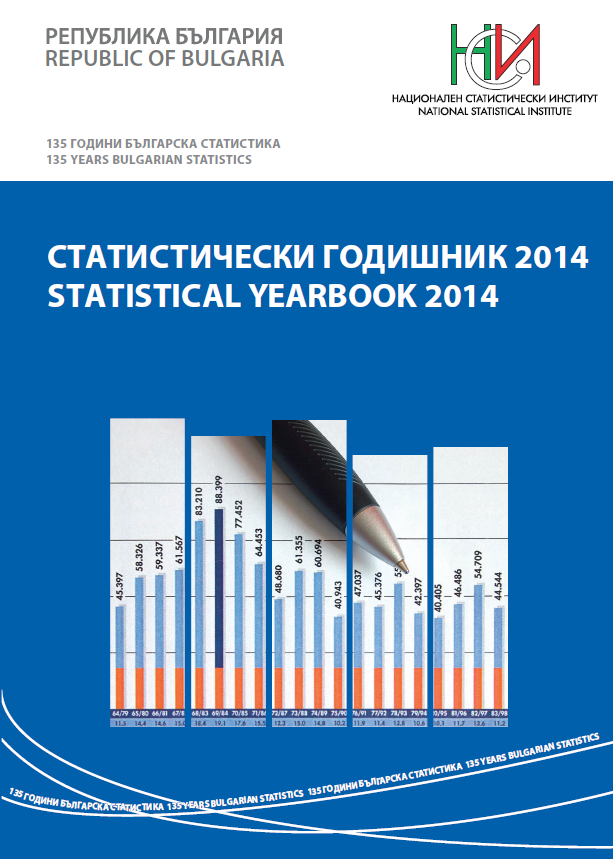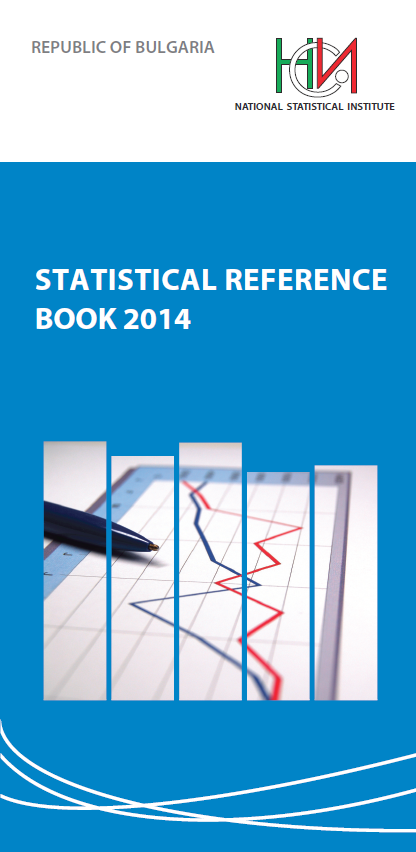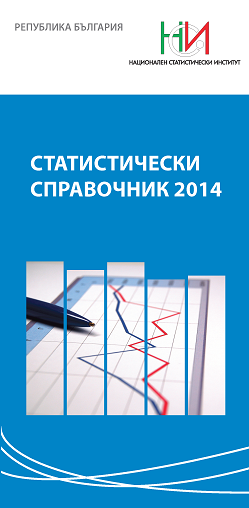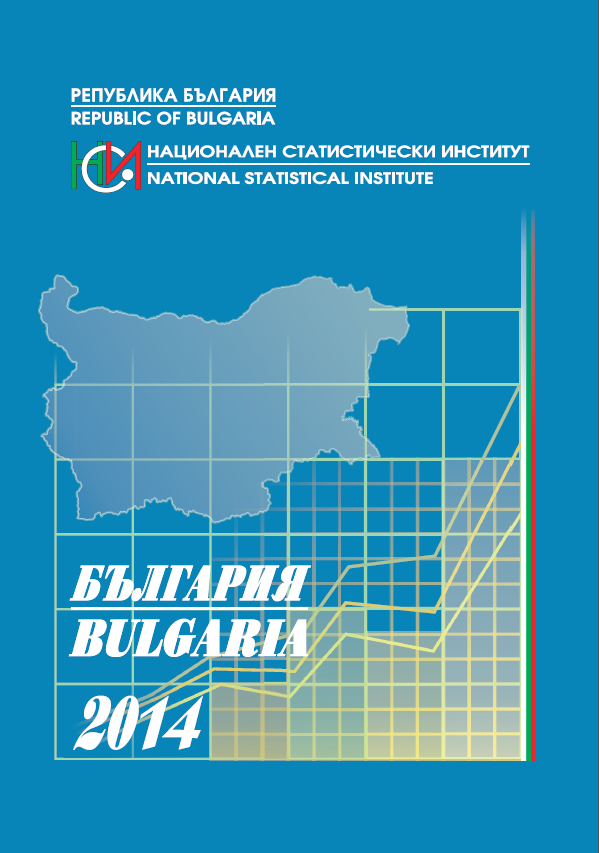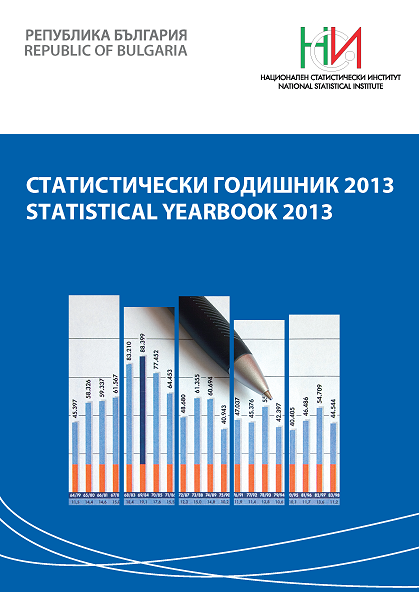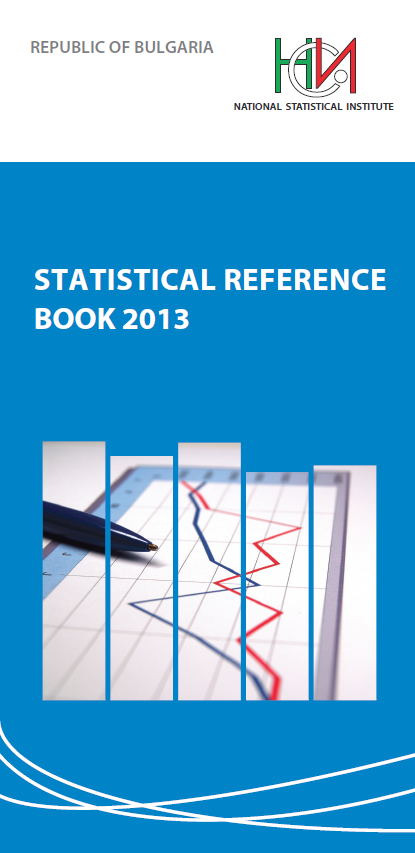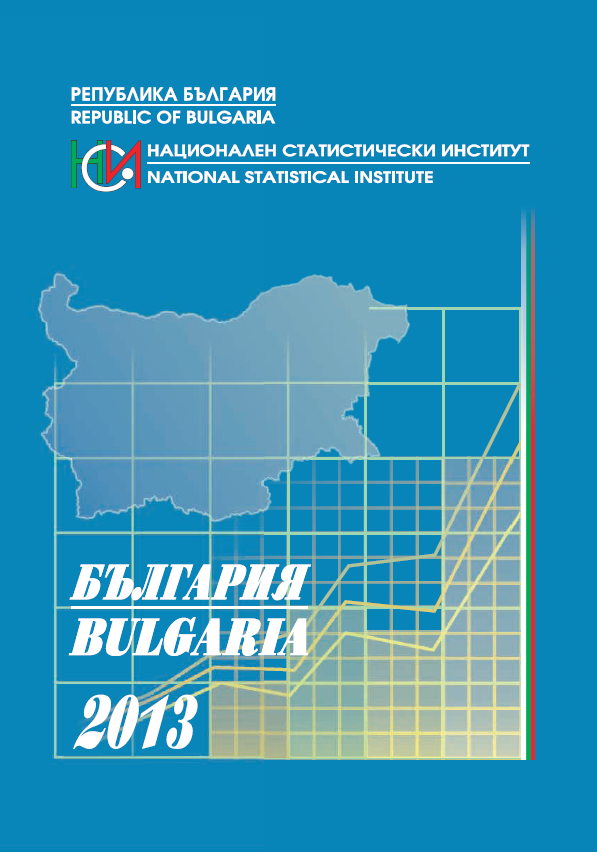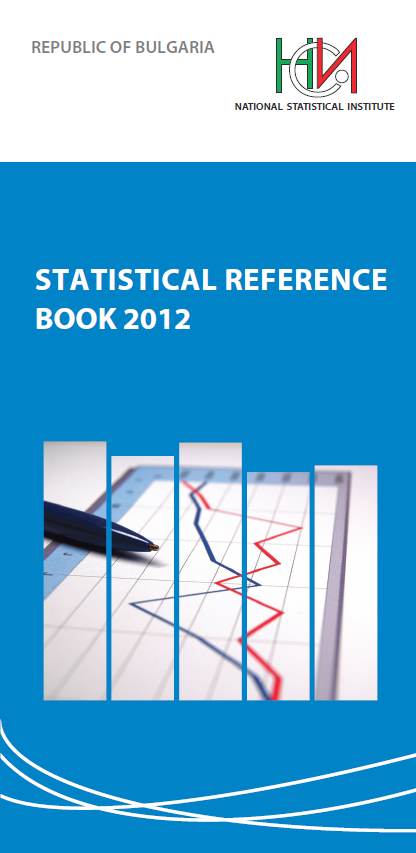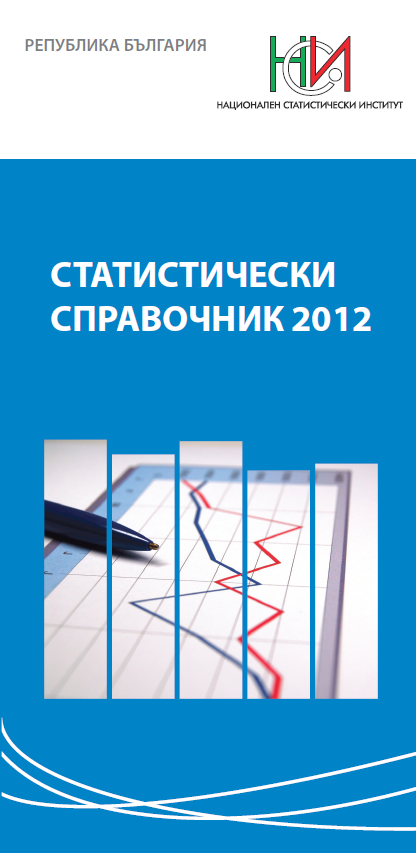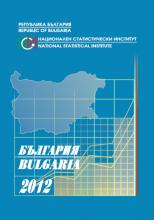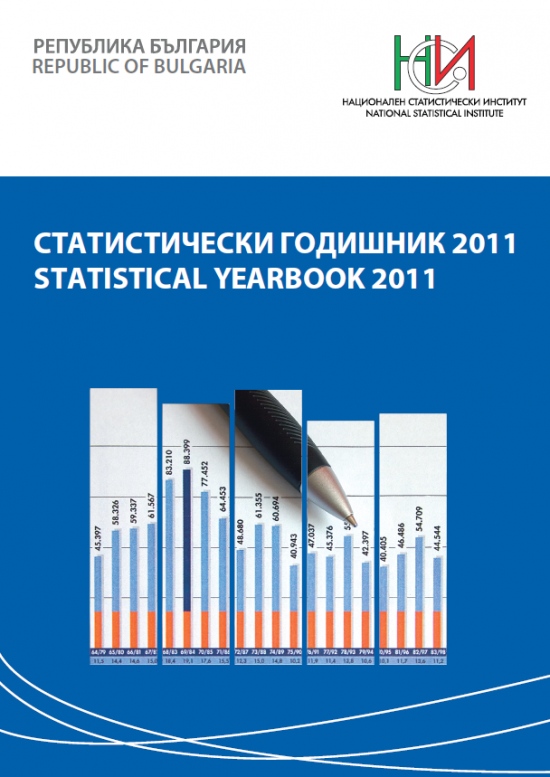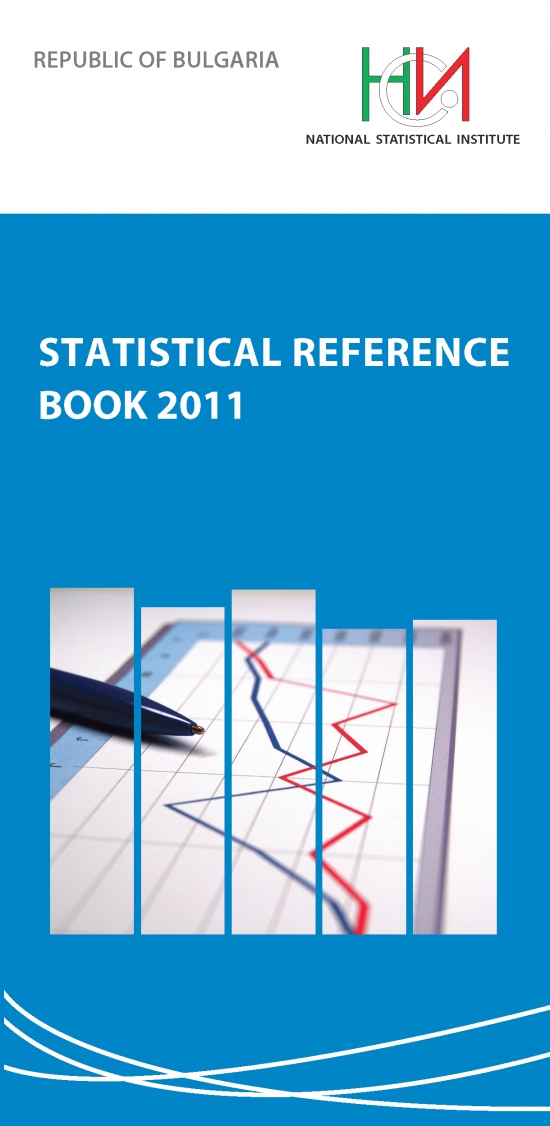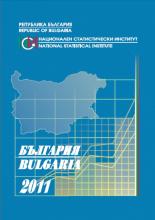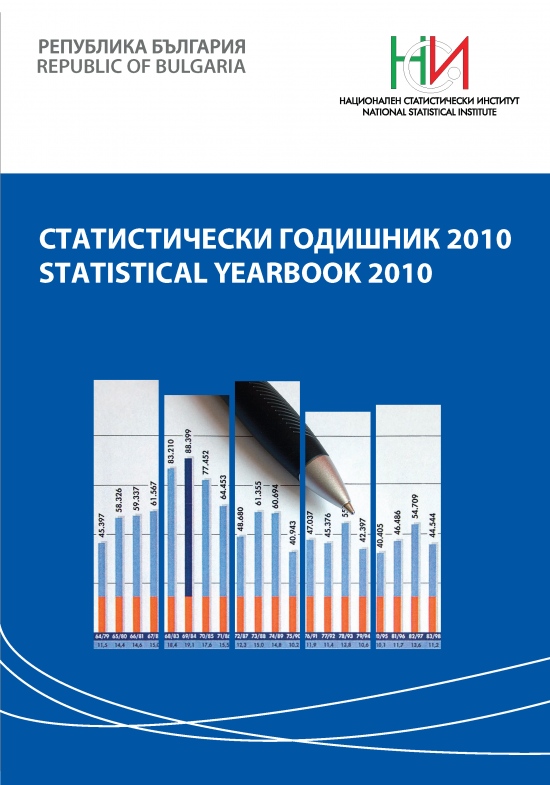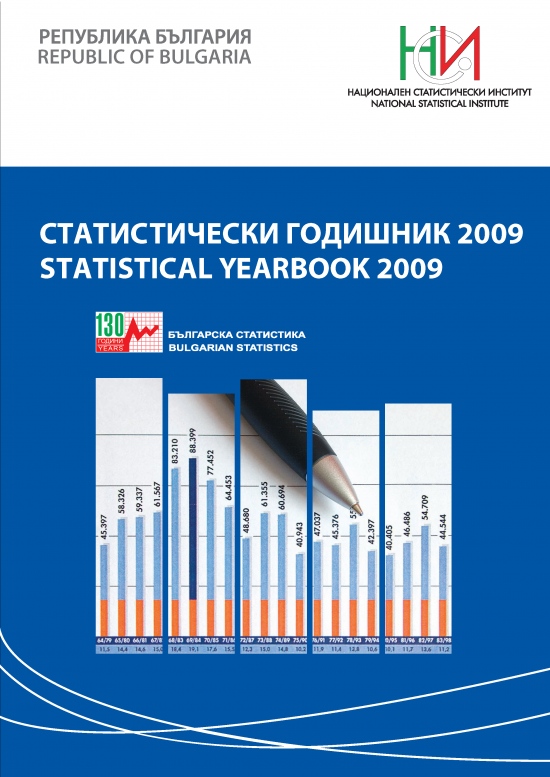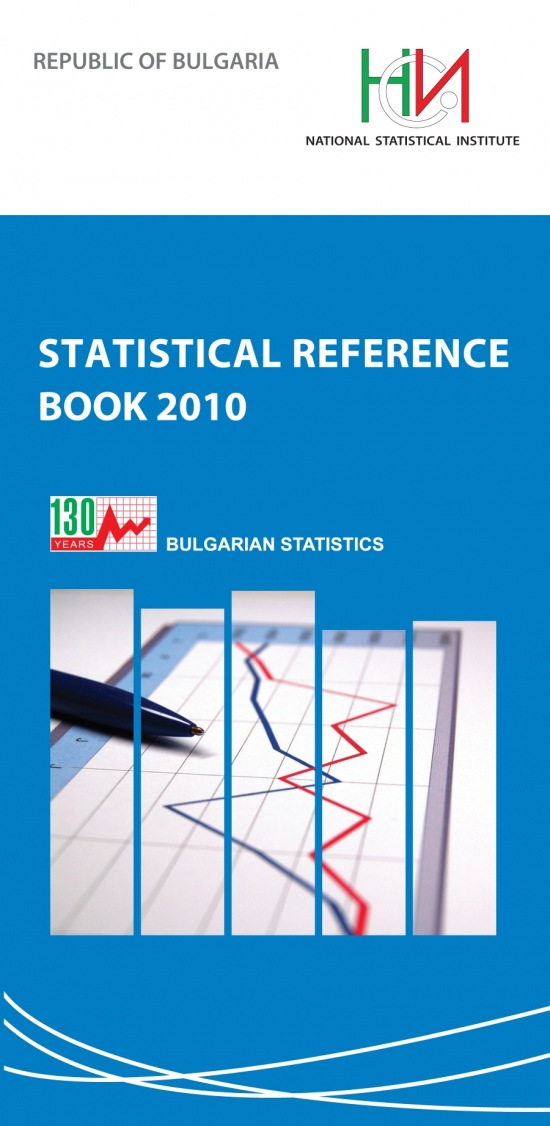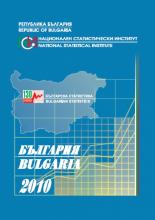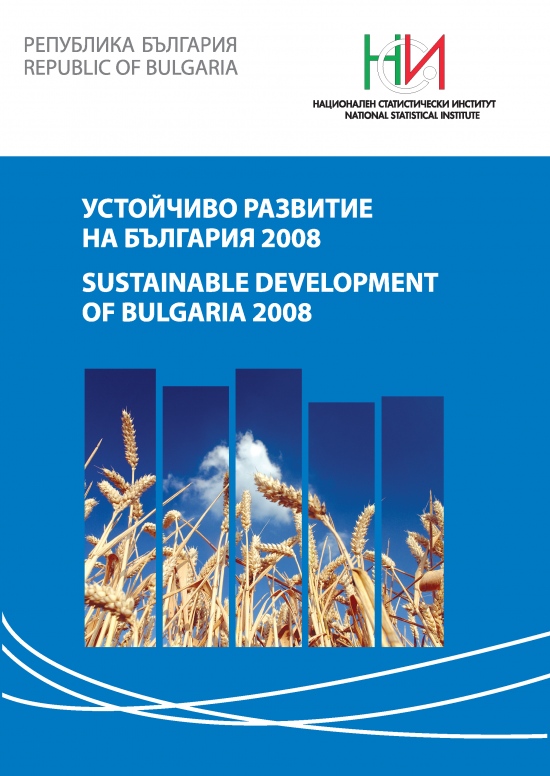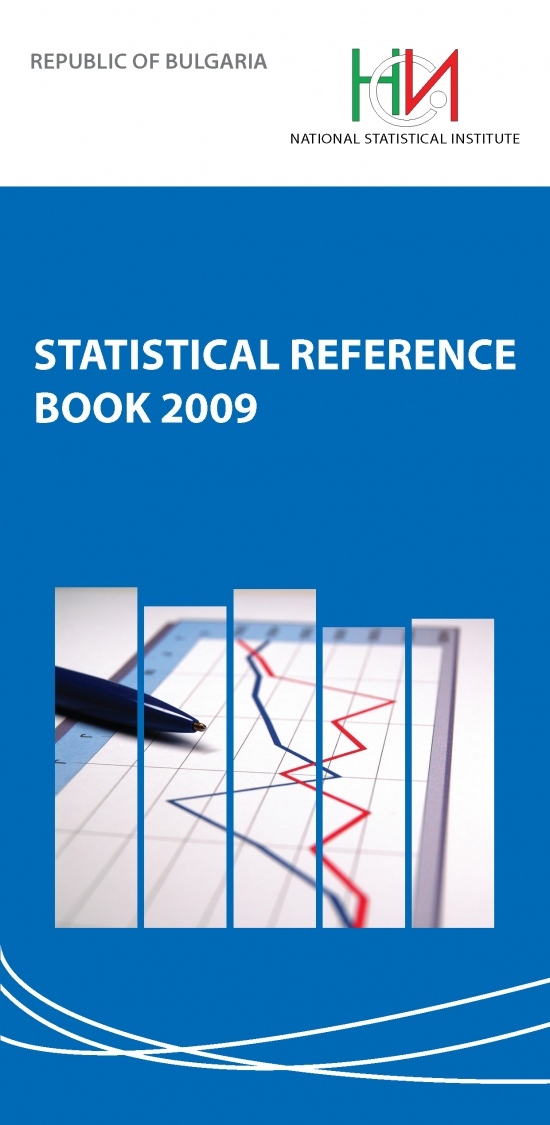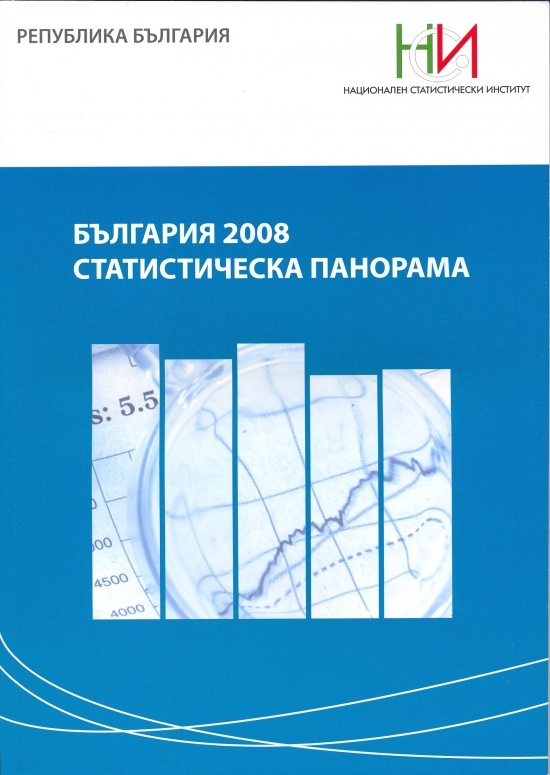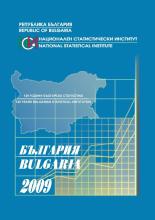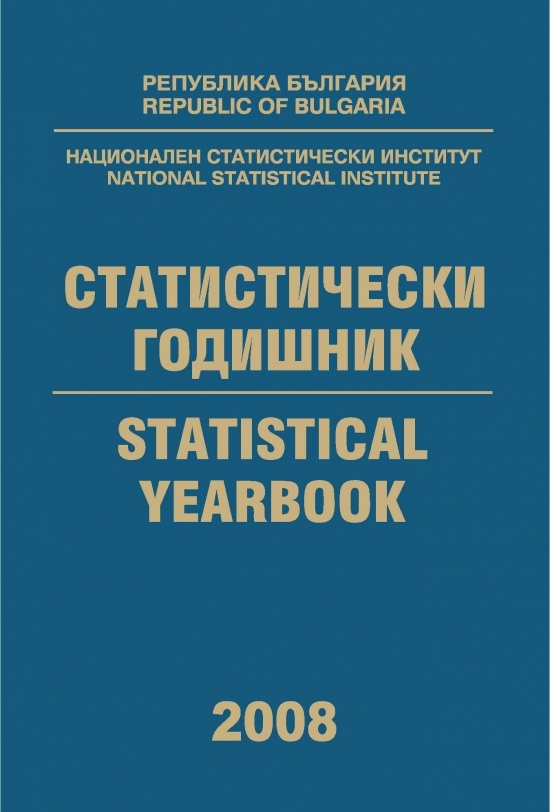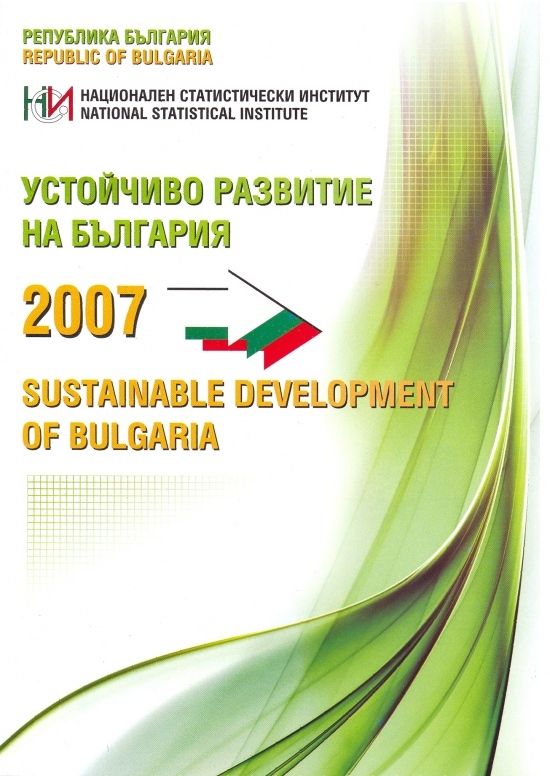Enterprises that have new or improved products new to the market, as a share of all enterprises
| 2022 | |
|---|---|
| Total | 7.4 |
| By economic sectors | |
| Industry1 | 9.5 |
| Services2 | 5.4 |
| By size class of enterprises (by number of persons employed) | |
| 10 - 49 | 6.4 |
| 50 - 249 | 10.8 |
| 250 or more | 13.3 |
1 Included are NACE Rev. 2 sections B, C, D and E. |
|
| 2 Included are NACE Rev. 2 sections Н, J and К, and NACE Rev. 2 divisions 46, 71, 72 and 73. | |
Euro-SDMX Metadata Structure (ESMS)
| Contact | |
|---|---|
| Contact organisation | National Statistical Institute |
| Contact organisation unit | Statistics on Labour costs, Research and Development, Innovation and Information Society Department |
| Contact name | |
| Contact person function | State expert |
| Contact mail address | 2, P. Volov Str.; 1038 Sofia, Bulgaria |
| Contact email address | |
| Contact phone number | +359 2 9857 167 |
| Contact fax number | |
| Metadata update | |
| Metadata last certified | 12 November 2024 |
| Metadata last posted | 12 November 2024 |
| Metadata last update | 12 November 2024 |
| Statistical presentation | |
| Data description | The statistical survey on innovation activity is conducted every even year and the observation period covered by the survey is the three-year period. The survey provides internationally comparable information on product and business process innovations introduced in the enterprises in Bulgaria. |
| Classification system | · Classification of Economic Activities (CEA-2008, for international use NACE.BG-2008); · Classification of territorial units for statistical purposes in Bulgaria (NUTS). |
| Sector coverage | Units of observation are all enterprises of non-financial and financial sector with 10 or more persons employed engaged primarily in the following economic activities (NACE.BG-2008): Mining and quarrying; Manufacturing; Electricity, gas, steam and air conditioning supply; Water supply; sewerage, waste management and remediation activities; Wholesale trade, except of motor vehicles and motorcycles; Transportation and storage; Information and communication; Financial and insurance activities; Architectural and engineering activities; technical testing and analysis; Scientific research and development; Advertising and market research. |
| Statistical concepts and definitions | An innovation is a new or improved product (good or service) or business process that differs significantly from the enterprise’s previous products or business processes and that has been implemented on the market or brought into use by the enterprise. An innovation-active enterprise is an enterprise, which during the observation period is engaged in one or more activities to develop or implement new or improved products or business processes. A product innovation is a new or improved good or service that differs significantly from the enterprise’s previous goods or services and that has been implemented on the market. It includes significant changes to the design of the goods. Simple re-sale of new goods and changes of a solely aesthetic nature are excluded. A business process innovation is a new or improved business process for one or more business functions that differs significantly from the enterprises’s previous business processes and that has been implemented within the firm. Business process innovations include new or improved methods for: · producing goods or providing services; · logistics, delivery or distribution; · information processing or communication; · accounting or other administrative operations; · business practices for organising procedures or external relations; · organising work responsibility, decision making or human resource management; · marketing methods for promotion, packaging, pricing, product placement or after sales services. Innovation co-operation is active participation with other enterprises or institutions in innovation projects. Pure contracting out of work with no active co-operation in innovation projects is not considered as a co-operation. Innovation activity includes all developmental, financial and commercial activities undertaken by the enterprise that are intended to result in innovations. |
| Statistical unit | Enterprise. |
| Statistical population | The Innovation survey is exhaustive and the statistical population includes all non-financial and financial enterprises with 10 or more persons employed engaged in the economic activities (NACE.BG-2008) referred to in item Sector coverage. |
| Reference area | The data refer to the activities of non-financial and financial enterprises carried out in the country. |
| Time coverage | Since 2004 - the last reference year (only the even years). |
| Base period | Not applicable. |
| Unit of measure | |
CIS data - Absolute value and Percentage; Innovation expenditures and turnover - Thousand BGN. | |
| Reference period | |
Every even year. | |
| Institutional mandate | |
| Legal acts and other agreements | EU Legislation: · Regulation (EU) 2019/2152 of the European Parliament and of the Council of 27 November 2019 on European business statistics, repealing 10 legal acts in the field of business statistics; · Commission Implementing Regulation (EU) 2022/1092 of 30 June 2022 laying down technical specifications of data requirements for the topic ‘Innovation’ pursuant to Regulation (EU) 2019/2152 of the European Parliament and of the Council. National Legal basis: · Law on Statistics; · National Statistical Programme. |
| Data sharing | Not applicable. |
| Confidentiality | |
| Confidentiality - policy | · Law on Statistics; · Regulation (EC) No 223/2009 on European statistics (recital 24 and Article 20(4)) of 11 March 2009 (OJ L 87, p. 164), stipulates the need to establish common principles and guidelines ensuring the confidentiality of data used for the production of European statistics and the access to those confidential data with due account for technical developments and the requirements of users in a democratic society. |
| Confidentiality - data treatment | The individual (primary) data are confidential according to the Law on Statistics and European legislation. To ensure their protection and inability to be identified, the aggregated indicators are also defined as confidential when the indicator is calculated from one or two enterprises or one enterprise formed more than 85% of the total value of this indicator. |
| Release policy | |
| Release calendar | The deadline for dissemination of the statistical information on innovation activity is specified in the Release Calendar presenting the results of the statistical surveys carried out by the National Statistical Institute. |
| Release calendar access | The calendar is available on the NSI website. |
| User access | Data are published on the NSI web site and on NSI information system INFOSTAT and are available to all users of statistical information. |
| Frequency of dissemination | |
Every even year. | |
| Accessibility and clarity | |
| News release | Regular press release |
| Publications | · Statistical Yearbook; · Statistical Reference book. |
| On-line database | Data are available for all users on the NSI website and on NSI information system INFOSTAT under the heading R&D, Innovation and Information Society. |
| Micro-data access | According to Rules for provision of anonymised individual data for scientific and research purposes of the National Statistical Institute. |
| Other | Information service on request, according to the Rules for dissemination of statistical products and services of NSI. |
| Documentation on methodology | Methodological manual 'Oslo Manual' (Guidelines for collecting, reporting and using data on innovation - Oslo Manual, 2018). |
| Quality documentation | Quality reports on Innovation statistics. |
| Quality management | |
| Quality assurance | Statistical practices used to compile the data on innovation activity of enterprises are in compliance with Oslo Manual recommendations. |
| Quality assessment | Performed by standard criteria for quality assessment - relevance, accuracy and reliability, timeliness, comparability and coherence. |
| Relevance | |
| User needs | Main users of the data on innovation activity of enterprises are ministries, research institutions and other users in the country, as well as Eurostat and other international organizations. |
| User satisfaction | Not conducted the satisfaction survey. |
| Completeness | In accordance with Commission Implementing Regulation (EU) 2022/1092 the required data completeness is ensured for all variables. |
| Accuracy and reliability | |
| Overall accuracy | The statistical data are of good accuracy and reliability. |
| Sampling error | The survey is exhaustive and there are no sampling errors. |
| Non-sampling error | Not applicable. |
| Timeliness and punctuality | |
| Timeliness | Data are published 18 months after the end of the reference period. |
| Punctuality | Deadlines for the data delivery on innovation activity of enterprises, specified in the Release Calendar, are strictly followed. |
| Coherence and comparability | |
| Comparability - geographical | In order to ensure comparability across countries, Eurostat, in close cooperation with the EU Member States and other countries developed a standard core questionnaire for each CIS, with an accompanying set of definitions and methodological recommendations which are adopted by all countries and are fully consistent with the definitions in the methodological manual 'Oslo Manual'. |
| Comparability - over time | Data are comparable over time. |
| Coherence - cross domain | Data obtained from the Innovation survey are coherent with R&D data. |
| Coherence - internal | Not applicable. |
| Cost and burden | |
Not applicable. | |
| Data revision | |
| Data revision - policy | Not applicable. |
| Data revision - practice | Not applicable. |
| Statistical processing | |
| Source data | Statistical survey on innovation activity of enterprises. |
| Frequency of data collection | Every even year. |
| Data collection | Exhaustive survey of all enterprises of non-financial and financial sector with 10 or more persons employed. Data are collected using an electronic (on-line) questionnaire included in the annual reports on the activities of enterprises. |
| Data validation | Data validation is done through arithmetic and logic control of input data and comparison of the output data with the results of previous surveys and data from administrative sources. |
| Data compilation | The Innovation survey is exhaustive survey and no estimates are made. |
| Adjustment | Not applicable. |
| Comment | |
ESS Standard for Quality Reports Structure (ESQRS)
| Contact | |
|---|---|
| Contact organisation | National Statistical Institute |
| Contact organisation unit | Statistics on Labour costs, Research and Development, Innovation and Information Society Department |
| Contact name | |
| Contact person function | State expert |
| Contact mail address | 2, P. Volov Str.; 1038 Sofia, Bulgaria |
| Contact email address | |
| Contact phone number | +359 2 9857 167 |
| Contact fax number | |
| Statistical presentation | |
| Data description | The statistical survey on innovation activity is conducted every even year and the observation period covered by the survey is the three-year period. The survey provides internationally comparable information on product and business process innovations introduced in the enterprises in Bulgaria. |
| Classification system | · Classification of Economic Activities (CEA-2008, for international use NACE.BG-2008); · Classification of territorial units for statistical purposes in Bulgaria (NUTS). |
| Sector coverage | Units of observation are all enterprises of non-financial and financial sector with 10 or more persons employed engaged primarily in the following economic activities (NACE.BG-2008): Mining and quarrying; Manufacturing; Electricity, gas, steam and air conditioning supply; Water supply; sewerage, waste management and remediation activities; Wholesale trade, except of motor vehicles and motorcycles; Transportation and storage; Information and communication; Financial and insurance activities; Architectural and engineering activities; technical testing and analysis; Scientific research and development; Advertising and market research. |
| Statistical concepts and definitions | An innovation is a new or improved product (good or service) or business process that differs significantly from the enterprise’s previous products or business processes and that has been implemented on the market or brought into use by the enterprise. An innovation-active enterprise is an enterprise, which during the observation period is engaged in one or more activities to develop or implement new or improved products or business processes. A product innovation is a new or improved good or service that differs significantly from the enterprise’s previous goods or services and that has been implemented on the market. It includes significant changes to the design of the goods. Simple re-sale of new goods and changes of a solely aesthetic nature are excluded. A business process innovation is a new or improved business process for one or more business functions that differs significantly from the enterprises’s previous business processes and that has been implemented within the firm. Business process innovations include new or improved methods for: · producing goods or providing services; · logistics, delivery or distribution; · information processing or communication; · accounting or other administrative operations; · business practices for organising procedures or external relations; · organising work responsibility, decision making or human resource management; · marketing methods for promotion, packaging, pricing, product placement or after sales services. Innovation co-operation is active participation with other enterprises or institutions in innovation projects. Pure contracting out of work with no active co-operation in innovation projects is not considered as a co-operation. Innovation activity includes all developmental, financial and commercial activities undertaken by the enterprise that are intended to result in innovations. |
| Statistical unit | Enterprise. |
| Statistical population | The Innovation survey is exhaustive and the statistical population includes all non-financial and financial enterprises with 10 or more persons employed engaged in the economic activities (NACE.BG-2008) referred to in item Sector coverage. |
| Reference area | The data refer to the activities of non-financial and financial enterprises carried out in the country. |
| Time coverage | Since 2004 - the last reference year (only the even years). |
| Base period | Not applicable. |
| Statistical processing | |
| Source data | Statistical survey on innovation activity of enterprises. |
| Frequency of data collection | Every even year. |
| Data collection | Exhaustive survey of all enterprises of non-financial and financial sector with 10 or more persons employed. Data are collected using an electronic (on-line) questionnaire included in the annual reports on the activities of enterprises. |
| Data validation | Data validation is done through arithmetic and logic control of input data and comparison of the output data with the results of previous surveys and data from administrative sources. |
| Data compilation | The Innovation survey is exhaustive survey and no estimates are made. |
| Adjustment | Not applicable. |
| Quality management | |
| Quality assurance | Statistical practices used to compile the data on innovation activity of enterprises are in compliance with Oslo Manual recommendations. |
| Quality assessment | Performed by standard criteria for quality assessment - relevance, accuracy and reliability, timeliness, comparability and coherence. |
| Relevance | |
| User needs | Main users of the data on innovation activity of enterprises are ministries, research institutions and other users in the country, as well as Eurostat and other international organizations. |
| User satisfaction | Not conducted the satisfaction survey. |
| Completeness | In accordance with Commission Implementing Regulation (EU) 2022/1092 the required data completeness is ensured for all variables. |
| Data completeness - rate | Data are produced in all required breakdowns for the obligatory variables according to Commission Implementing Regulation (EU) 2022/1092. Additional data breakdowns are also compiled in order to satisfy user needs. |
| Accuracy and reliability | |
| Overall accuracy | The statistical data are of good accuracy and reliability. |
| Sampling error | The survey is exhaustive and there are no sampling errors. |
| Sampling errors - indicators | The survey is exhaustive and there are no sampling errors. |
| Non-sampling error | Not applicable. |
| Coverage error | There are no indications for coverage errors. |
| Over-coverage - rate | There is no over-coverage. |
| Common units - proportion | Not applicable. |
| Measurement error | In order to minimize the measurement errors, because of misunderstanding of the respondents, the questionnaire on innovation activity of enterprises is attended with methodological explanatory notes in line with Oslo Manual recommendations. |
| Non response error | Actions to reduce the non-response include sending the reminder letters, supplemented if needed, by telephone calls and/or direct contact with the respondents for collection of data. |
| Unit non-response - rate | Unit non-response error is 7%. |
| Item non-response - rate | There is not item non-response error. |
| Processing error | Processing errors are negligible due to extensive arithmetic and logical checking control of data. |
| Imputation - rate | Not applicable. |
| Model assumption error | Not applicable. |
| Seasonal adjustment | Not applicable. |
| Data revision - policy | Not applicable. |
| Data revision - practice | Not applicable. |
| Data revision - average size | Not applicable. |
| Timeliness and punctuality | |
| Timeliness | Data are published 18 months after the end of the reference period. |
| Time lag - first results | |
| Time lag - final results | Final data - 18 months after the end of the reference period. |
| Punctuality | Deadlines for the data delivery on innovation activity of enterprises, specified in the Release Calendar, are strictly followed. |
| Punctuality - delivery and publication | Data on innovation activity of enterprises are published at the date specified in the Release Calendar presenting the results of the statistical surveys carried out by the NSI. |
| Coherence and comparability | |
| Comparability - geographical | In order to ensure comparability across countries, Eurostat, in close cooperation with the EU Member States and other countries developed a standard core questionnaire for each CIS, with an accompanying set of definitions and methodological recommendations which are adopted by all countries and are fully consistent with the definitions in the methodological manual 'Oslo Manual'. |
| Asymmetry for mirror flows statistics - coefficient | Not applicable. |
| Comparability - over time | Data are comparable over time. |
| Length of comparable time series | |
| Coherence - cross domain | Data obtained from the Innovation survey are coherent with R&D data. |
| Coherence - sub annual and annual statistics | Not applicable. |
| Coherence - National Accounts | Not applicable. |
| Coherence - internal | Not applicable. |
| Accessibility and clarity | |
| News release | Regular press release |
| Publications | · Statistical Yearbook; · Statistical Reference book. |
| On-line database | Data are available for all users on the NSI website and on NSI information system INFOSTAT under the heading R&D, Innovation and Information Society. |
| Data tables - consultations | |
| Micro-data access | According to Rules for provision of anonymised individual data for scientific and research purposes of the National Statistical Institute. |
| Other | Information service on request, according to the Rules for dissemination of statistical products and services of NSI. |
| Metadata - consultations | |
| Documentation on methodology | Methodological manual 'Oslo Manual' (Guidelines for collecting, reporting and using data on innovation - Oslo Manual, 2018). |
| Metadata completeness – rate | |
| Quality documentation | Quality reports on Innovation statistics. |
| Cost and burden | |
Not applicable. | |
| Confidentiality | |
| Confidentiality - policy | · Law on Statistics; · Regulation (EC) No 223/2009 on European statistics (recital 24 and Article 20(4)) of 11 March 2009 (OJ L 87, p. 164), stipulates the need to establish common principles and guidelines ensuring the confidentiality of data used for the production of European statistics and the access to those confidential data with due account for technical developments and the requirements of users in a democratic society. |
| Confidentiality – data treatment | The individual (primary) data are confidential according to the Law on Statistics and European legislation. To ensure their protection and inability to be identified, the aggregated indicators are also defined as confidential when the indicator is calculated from one or two enterprises or one enterprise formed more than 85% of the total value of this indicator. |
| Comment | |
Innovation Activity of the Enterprises during the period 2020 - 2022
During the period 2020 - 2022, 26.1% of the enterprises with 10 or more persons employed carried out an innovation activity. The innovation activity of the enterprises in the industrial sector (32.9%) was higher than of those in the services sector (19.6%). The largest share of innovation active enterprises was in the group of large enterprises (with 250 or more persons employed) - 72.3% in industry and 66.5% in services.
In 2022, the turnover of innovation active enterprises constituted 51.9% of the turnover, and the persons employed - 51.8% of the persons employed in all e...
Innovation Activity of the Enterprises during the period 2018 - 2020
During the period 2018 - 2020, 36.2% of the enterprises with 10 or more persons employed carried out an innovation activity.
...Innovation Activity of the Enterprises during the period 2016 - 2018
During the period 2016 - 2018 30.1% of the enterprises with 10 or more persons employed carried out an innovation activity.
...Innovation Activity during the period 2014 - 2016
During the period 2014 - 2016 27.2% of the enterprises carried out an innovation activity.
...Innovation Activity during the period 2012 - 2014
During the period 2012 - 2014 26.1% of the enterprises carried out an innovation activity.
...Innovation Activity during the 2010 - 2012 Period
During the 2010 - 2012 period 27.4% of the enterprises carried out an innovation activity.
...Innovation Activity of the Enterprises, 2008 - 2010
Nearly one third (27.1%) of the enterprises with market-oriented activity and with more than nine employees in Bulgaria have realized innovation activity during the period 2008-2010.
...Innovation Activity, 2006 - 2008
Nearly a quarter of the Bulgarian enterprises (23.9%) have been fulfilled innovation activity over the period 2006 - 2008.
...Statistical Reference Book 2024
Тhe National Statistical Institute presents to the users of statistical information the annual publication - Statistical Reference Book 2024 in English.
The Statistical Reference Book presents up-to-date information on the demographic processes as well as the economic, social and cultural development of the Republic of Bulgaria for the 2019 - 2023 period.
The publication presents data on main macroeconomic indicators of the national economy - gross domestic product, investments and finance; and economic acti...
Bulgaria 2024
The National Statistical Institute presents the bilingual (Bulgarian/English) brochure Bulgaria 2024 to the users of statistical information. The brochure is addressed to a wide range of users (international institutions, representatives of business, students, experts etc.) and changes the traditional presentation of statistical information by offering an innovative structure with a parallel translation in English.
The publication contains up-to-date statistical information about the demographic, social and economic development of the country over the 2018 - 2023 ...
Statistical Reference Book 2024 (Bulgarian version)
The National Statistical Institute presents to users of statistical information the annual publication - Statistical Reference Book 2024 in Bulgarian.
The Statistical Reference Book presents up-to-date information on the demographic processes as well as the economic, social and cultural development of the Republic of Bulgaria for the 2019 - 2023 period.
The publication presents data on main macroeconomic indicators of the national economy - gross domestic product, investments and finance; and economic activity groupings - industry, agriculture, forestry,...
Statistical Yearbook 2023
The National Statistical Institute (NSI) has the pleasure to present to the attention of national and foreign users of statistical information the 91-st edition of the ‘Statistical Yearbook of the Republic of Bulgaria’ in printed format.
It provides current statistical information about the demographic, economic and social development of the country for 2017 - 2022 in different territorial and classification aggregations and breakdowns.
According to the Law on Statistics, official source of information in the Republic of Bulgaria is the National Statistical Sys...
Statistical Reference Book 2023 (Bulgarian version)
The National Statistical Institute presents to users of statistical information the annual publication - Statistical Reference Book 2023 in Bulgarian.
The Statistical Reference Book presents topical information on the demographic processes as well as the economic, social and cultural development of the Republic of Bulgaria for the 2018 - 2022 period.
The publication presents data on main macroeconomic indicators of the national economy - gross domestic product, investments and finance; and economic activity groupings ...
Statistical Reference Book 2023
The National Statistical Institute presents to users of statistical information the annual publication - Statistical Reference Book 2023 in English.
The Statistical Reference Book presents topical information on the demographic processes as well as the economic, social and cultural development of the Republic of Bulgaria for the 2018 - 2022 period.
The publication presents data on main macroeconomic indicators of the national economy - gross domestic product, investments and finance; and economic activity groupings - industry, agriculture, fore...
Statistical Yearbook 2022
It provides current statistical information about the demographic, economic and social development of the country for 2016 - 2021 in different territorial and classification aggregations and breakdowns.
According to the Law on Statistics, official source of information in the Republic of Bulgaria is the National Statistical ...
Statistical Reference Book 2022
The Statistical Reference Book presents topical information on the demographic processes as well as the economic, social and cultural development of the Republic of Bulgaria for the 2017 - 2021 period.
The publication presents data on main macroeconomic indicators of the national economy - gross domestic product, investments and finance; and economic activity groupings - industry, agriculture, ...
Bulgaria 2022
The National Statistical Institute presents the bilingual (Bulgarian/English) brochure Bulgaria 2022 to users of statistical information. The brochure is addressed to a wide range of users (international institutions, business, students, experts etc.) and changes the traditional presentation of statistical information by offering an innovative structure with a parallel translation in English. The publication contains topical statistical information about the demographic, social and economic development of the country over the 2016 - 2021 period. It also includes n...
Statistical Reference Book 2022 (Bulgarian version)
The National Statistical Institute presents to users of statistical information the annual publication - Statistical Reference Book 2022 in Bulgarian.
The Statistical Reference Book presents topical information on the demographic processes as well as the economic, social and cultural development of the Republic of Bulgaria for the 2017 - 2021 period.
The publication presents data on main macroeconomic indicators of the national economy - gross domestic product, investments and finance; and economic activity groupings - industry, agriculture, fo...
Statistical Yearbook 2021
It provides current statistical information about the demographic, economic and social development of the country for 2015 - 2020 in different territorial and classification aggregations and breakdowns.
According to the Law on Statistics, official source of information in the Republic of Bulgaria is the ...
Statistical Reference Book 2021
The Statistical Reference Book presents topical information on the demographic processes as well as the economic, social and cultural development of the Republic of Bulgaria for the 2016 - 2020 period.
The publication presents data on main macroeconomic indicators of the national economy - gross domestic product, investments and finance; and economic activity groupings - industry, agriculture, forestry, ...
Statistical Reference Book 2021 (Bulgarian version)
The Statistical Reference Book presents topical information on the demographic processes as well as the economic, social and cultural development of the Republic of Bulgaria for the 2016 - 2020 period.
The publication presents data on main macroeconomic indicators of the national economy - gross domestic product, investments and finance; and economic activity groupings - industry, agri...
Statistical Yearbook 2020
It provides current statistical information about the demographic, economic and social development of the country for 2014 - 2019 in different territorial and classification aggregations and breakdowns.
According to the Law on Statistics, official source of information in the Republic of Bulgaria is the ...
Bulgaria 2021
Statistical Yearbook 2012
Statistical Reference Book 2020
The Statistical Reference Book presents topical information on the demographic processes as well as the economic, social and cultural development of the Republic of Bulgaria for the 2016 - 2019 period.
The publication presents data on main macroeconomic indicators of the national economy - gross domestic product, investments and finance; and economic activity groupings - industry, agriculture, forestry, ...
Statistical Reference Book 2020 (Bulgarian version)
The Statistical Reference Book presents topical information on the demographic processes as well as the economic, social and cultural development of the Republic of Bulgaria for the 2016 - 2019 period.
The publication presents data on main macroeconomic indicators of the national economy - gross domestic product, investments and finance; and economic activity groupings - industry, agriculture,...
Bulgaria 2020
Statistical Yearbook 2019
It provides current statistical information about the demographic, economic and social development of the country for 2013 - 2018 in different territorial and classification aggregations and breakdowns.
According to the Law on Statistics, official source of information in the Republic of Bulgaria is the ...
Statistical Yearbook 2018 in infographics
In 2018, for the first time, we presented the results of the statistical surveys through graphics, images and other visualization tools, which resulted in a positive response among a wide range of users. We believe that this modern way of presenting statistical information will trigger the interest in those who for the first time encounter the meaning of numbers revealing important aspects of socio-economic life.
...Statistical Reference Book 2019
The Statistical Reference Book presents topical information on the demographic processes as well as the economic, social and cultural development of the Republic of Bulgaria for the 2015 - 2018 period.
The publication presents data on main macroeconomic indicators of the national economy - gross domestic product, investments and finance; and economic activity groupings - industry, agriculture, f...
Statistical Reference Book 2019 (Bulgarian version)
The Statistical Reference Book presents topical information on the demographic processes as well as the economic, social and cultural development of the Republic of Bulgaria for the 2015 - 2018 period.
The publication presents data on main macroeconomic indicators of the national economy - gross domestic product, investments and finance; and economic activity groupings - industry, agriculture, forestry, transp...
Statistical Yearbook 2018
It provides current statistical information about the demographic, economic and social development of the country for 2012 - 2017 in different territorial and classification aggregations and breakdowns.
According to the Law on Statistics, official source of information in the Republic of Bulgaria is the ...
Sustainable development of Bulgaria 2005 - 2016
The data is systematized in the following sections: Socioeconomic development; Sustainable consumption and production; Social inclusion; Demographic changes; Public health; Climate change and clean energy; Sustainable transport; Natural resources; Global partnership; Good governance.
Main objective ...
Statistical Reference Book 2018
The Statistical Reference Book presents topical information on the demographic processes as well as the economic, social and cultural development of the Republic of Bulgaria for the 2014 - 2017 period.
The publication presents data on main macroeconomic indicators of the national economy - gross domestic product, investments and finance; and economic activity groupings - industry, agriculture, f...
Statistical Yearbook 2017 in infographics
The publication is intended for a wider audience as statistical data are presented in a plain and easy understandable way.
The current state and changes in the socio-economic and cultural life in the country are presented not in the traditional way in tables and text, but through infographics - images, graphics and other visualization tools.
We belie...
Statistical Reference Book 2018 (Bulgarian version)
The Statistical Reference Book presents topical information on the demographic processes as well as the economic, social and cultural development of the Republic of Bulgaria for the 2014 - 2017 period.
The publication presents data on main macroeconomic indicators of the national economy - gross domestic product, investments and finance; and economic activity groupings - industry, agriculture, forestry, transp...
Statistical Yearbook 2017
It provides current statistical information about the demographic, economic and social development of the country for 2012 - 2016 in different territorial and classification aggregations and breakdowns.
According to the Law on Statistics, official source of information in the Republic of Bulgaria is the ...
Bulgaria 2018
Statistical Reference Book 2017
The Statistical Reference Book presents topical information on the demographic processes as well as the economic, social and cultural development of the Republic of Bulgaria for the 2013 - 2016 period.
The publication presents data on main macroeconomic indicators of the national economy - gross domestic product, investments and finance; and economic activity groupings - industry, agriculture, f...
Statistical Reference Book 2017 (Bulgarian version)
The Statistical Reference Book presents topical information on the demographic processes as well as the economic, social and cultural development of the Republic of Bulgaria for the 2013 - 2016 period.
The publication presents data on main macroeconomic indicators of the national economy - gross domestic product, investments and finance; and economic activity groupings - industry, agriculture, forestry, transp...
Bulgaria 2017
Statistical Yearbook 2016
It provides current statistical information about the demographic, economic and social development of the country for 2011 - 2015 in different territorial and classification aggregations and breakdowns.
According to the Law on Statistics, official source of information in the Republic of Bulgaria is the ...
Statistical Reference Book 2016
The Statistical Reference Book presents topical information on the demographic processes as well as the economic, social and cultural development of the Republic of Bulgaria for the 2012 - 2015 period.
The publication presents data on main macroeconomic indicators of the national economy - gross domestic product, investments and finance; and economic activity groupings - industry, agriculture, forestry, transpor...
Statistical Reference Book 2016 (Bulgarian version)
The Statistical Reference Book presents topical information on the demographic processes as well as the economic, social and cultural development of the Republic of Bulgaria for the 2012 - 2015 period.
The publication presents data on main macroeconomic indicators of the national economy - gross domestic product, investments and finance; and economic activity groupings - industry, agriculture, forestry, transp...
Bulgaria 2016
Statistical Yearbook 2015
It provides current statistical information about the demographic, economic and social development of the country for 2010 - 2014 in different territorial and classification aggregations and breakdowns.
According to the Law on Statistics, official source of information in the Republic of Bulgaria is the ...
Statistical Reference Book 2015
The National Statistical Institute presents to users of statistical information the annual publication - Statistical Reference Book 2015 in English.
The Statistical Reference Book presents topical information on the demographic processes as well as the economic, social and cultural development of the Republic of Bulgaria for the 2010 - 2014 period.
The publication presents data on main macroeconomic indicators of the national economy - gross domestic product, investments and finance; and economic activity groupings - industry, agriculture, forestry, transport, c...
Statistical Reference Book 2015 (Bulgarian version)
The National Statistical Institute presents to users of statistical information the annual publication - Statistical Reference Book 2015 in Bulgarian.
The Statistical Reference Book presents topical information on the demographic processes as well as the economic, social and cultural development of the Republic of Bulgaria for the 2010 - 2014 period.
The publication presents data on main macroeconomic indicators of the national economy - gross domestic product, investments and finance; and economic activity groupings - industry, agriculture, forestry, transport,...
Bulgaria 2015
The National Statistical Institute presents the bilingual (Bulgarian/English) brochure Bulgaria 2015 to users of statistical information. The brochure is addressed to a wide range of users (international institutions, businessmen, students, experts etc.) and changes the traditional presentation of statistical information by offering an innovative structure with a parallel translation in English. The publication contains topical statistical information about the demographic, social and economic development of the country over the 2010 - 2014 period. It also includes non-tra...
Statistical Yearbook 2014
The National Statistical Institute (NSI) has the pleasure to present to the attention of national and foreign users of statistical information the 82nd edition of the ‘Statistical Yearbook of the Republic of Bulgaria’ in printed and electronic format.
It provides current statistical information about the demographic, economic and social development of the country for 2009 - 2013 in different territorial and classification aggregations and breakdowns.
According to the Law on Statistics, official source of information in the Republic of Bulgaria is the Nati...
Statistical Reference Book 2014
The National Statistical Institute presents to users of statistical information the annual publication - Statistical Reference Book 2014 in English.
The Statistical Reference Book presents topical information on the demographic processes as well as the economic, social and cultural development of the Republic of Bulgaria for the 2009 - 2013 period.
The publication presents data on main macroeconomic indicators of the national economy - gross domestic product, investments and finance; and economic activity groupings - industry, agriculture, forestry, tran...
Statistical Reference Book 2014 (Bulgarian version)
The National Statistical Institute presents to users of statistical information the annual publication - Statistical Reference Book 2014 in Bulgarian.
The Statistical Reference Book presents topical information on the demographic processes as well as the economic, social and cultural development of the Republic of Bulgaria for the 2009 - 2013 period.
The publication presents data on main macroeconomic indicators of the national economy - gross domestic product, investments and finance; and economic activity groupings - industry, agriculture, forestry, tr...
Bulgaria 2014
The National Statistical Institute presents the bilingual (Bulgarian/English) brochure Bulgaria 2014 to users of statistical information. The brochure is addressed to a wide range of users (international institutions, businessmen, students, experts etc.) and changes the traditional presentation of statistical information by offering an innovative structure with a parallel translation in English. The publication contains topical statistical information about the demographic, social and economic development of the country over the 2008 - 2013 period. It also includes non-traditional ...
Statistical Yearbook 2013
The National Statistical Institute (NSI) has the pleasure to present to the attention of national and foreign users of statistical information the 81st edition of the ‘Statistical Yearbook of the Republic of Bulgaria’ in printed and electronic format.
It provides current statistical information about the demographic, economic and social development of the country for 2008 - 2012 in different territorial and classification aggregations and breakdowns.
According to the Law on Statistics, official source of information in the Republic of Bulgaria is the Nati...
Statistical Reference Book 2013
Statistical Reference Book 2013 (Bulgarian version)
Bulgaria 2013
Statistical Reference Book 2012
Statistical Reference Book 2012 (Bulgarian version)
Bulgaria 2012
Statistical Yearbook 2011
Statistical Reference Book 2011
Bulgaria 2011
Statistical Yearbook 2010
Statistical Yearbook 2009
Statistical Reference Book 2010
Bulgaria 2010
Bulgaria 2009 - Statistical Panorama
Sustainable Development of Bulgaria 2008
- Socioeconomic development;
- Sustainable consumption and production;
- Social inclusion;
- Demographic changes;
- Public health;
- Climate chang...
